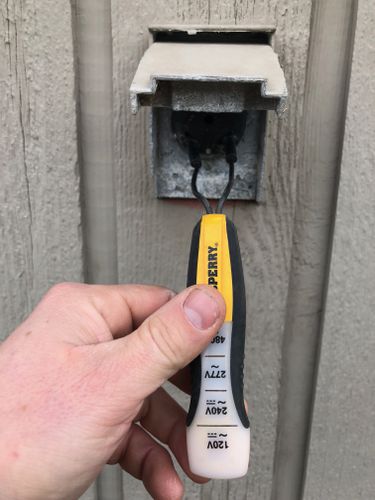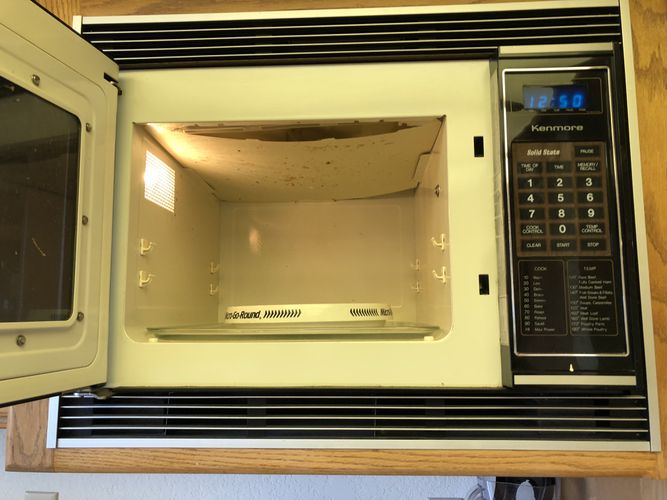Overview
Overall, this appears to have been a well-built 1980's home that has not had significant updates in quite some time. This house requires minimal repairs. I noted some Heating system components that will require further evaluation and the Spa room should be further investigated by a specialist. This home is in very good condition for it's age and proximity to the ocean.
The Scope and Purpose of a Home Inspection
Purchasing property involves risk
The purpose of a home inspection is to help reduce the risk associated with the purchase of a structure by providing a professional opinion about the overall condition of the structure. A home inspection is a limited visual inspection and it cannot eliminate this risk. Some homes present more risks than others. We cannot control this, but we try to help educate you about what we don’t know during the inspection process. This is more difficult to convey in a report and one of many reasons why we recommend that you attend the inspection.
A home inspection is not an insurance policy
This report does not substitute for or serve as a warranty or guarantee of any kind. Home warranties can be purchased separately from insuring firms that provide this service.
A home inspection is visual and not destructive
The descriptions and observations in this report are based on a visual inspection of the structure. We inspect the aspects of the structure that can be viewed without dismantling, damaging or disfiguring the structure and without moving furniture and interior furnishings. Areas that are concealed, hidden or inaccessible to view are not covered by this inspection. Some systems cannot be tested during this inspection as testing risks damaging the building. For example, overflow drains on bathtubs are generally not tested because if they were found to be leaking they could damage the finishes below. Our procedures involve non-invasive investigation and non-destructive testing which will limit the scope of the inspection.
This is not an inspection for code compliance
This inspection and report are not intended for city / local code compliance. During the construction process structures are inspected for code compliance by municipal inspectors. Framing is open at this time and conditions can be fully viewed. Framing is not open during inspections of finished homes, and this limits the inspection. All houses fall out of code compliance shortly after they are built, as the codes continually change. National codes are augmented at least every three years for all of the varying disciplines. Municipalities can choose to adopt and phase in sections of the codes on their own timetables. There are generally no requirements to bring older homes into compliance unless substantial renovation is being done.
This is just our opinion
Construction techniques and standards vary. There is no one way to build a house or install a system in a house. The observations in this report are the opinions of the home inspector. Other inspectors and contractors are likely to have some differing opinions. You are welcome to seek opinions from other professionals.
The scope of this inspection
This inspection will include the following systems: exterior, roof, structure, drainage, foundation, attic, interior, plumbing, electrical and heating. The evaluation will be based on limited observations that are primarily visual and non-invasive. This inspection and report are not intended to be technically exhaustive.For more about the scope of a home inspection see: ASHI National Standards at http://www.aareihome.com/standards.pdf or Washington State Home Inspection Standards at http://app.leg.wa.gov/RCW/default.aspx?cite=18.280.030
Your expectations
The overall goal of a home inspection is to help insure that your expectations are appropriate with the house you are proposing to buy. To this end we assist with discovery by showing and documenting observations during the home inspection. This should not be mistaken for a technically exhaustive inspection designed to uncover every defect with a building. Such inspections are available but they are generally cost-prohibitive to most homebuyers.
Your participation is requested
Your presence is requested during this inspection. A written report will not substitute for all the possible information that can be conveyed verbally by a shared visual observation of the conditions of the property.
How to Read This Report
Getting the Information to You
This report is designed to deliver important and technical information in a way that is easy for anyone to access and understand. If you are in a hurry, you can take a “Quick Look” at our summary page and quickly get critical information for important decision making. However, we strongly recommend that you take the time to read the full Report, which includes digital photographs, captions, diagrams, videos and hot links to additional information.
The best way to get the layers of information that are presented in this report is to read your report online. This will allow all you to expand your learning about your house. You will notice some words or series of words highlighted in blue and underlined – clicking on these will provide you with a link to additional information.
This report can also be printed on paper or to a PDF document.
Chapters and Sections
This report is divided into chapters that parcel the home into logical inspection components. Each chapter is broken into sections that relate to a specific system or component of the home. You can navigate between chapters with the click of a button on the left side margin.
Most sections will contain some descriptive information done in black font. Observation narrative, done in colored boxes, will be included if a system or component is found to be significantly deficient in some way or if we wish to provide helpful additional information about the system or the scope of our inspection. If a system or component of the home was deemed to be in satisfactory or serviceable condition, there may be no narrative observation comments in that section.
Observation Labels
All narrative observations are colored, numbered and labeled to help you find, refer to, and understand the severity of the observation. Observation colors and labels used in this report are:
- Major Concern:Repair items that may cost significant money to correct now or in the near future, or items that require immediate attention to prevent additional damage or eliminate safety hazards.
- RepairRepair and maintenance items noted during inspection. Please note that some repair items can be expensive to correct such as re-finishing hardwood floors, but are considered simply repair items due to their cosmetic nature.
- ImproveObservations that are not necessarily defects, but which could be improved for safety, efficiency, or reliability reasons.
- MonitorItems that should be watched to see if correction may be needed in the future.
- Due DiligenceObservation such as a buried oil tank that may require further investigation to determine the severity and / or urgency of repair.
- Future ProjectA repair that may be deferred for some time but should be on the radar for repair or replacement in the near future.
- EfficiencyDenotes observations that are needed to make the home more energy efficient as well as to bring the home up to modern insulation standards. This category typically includes windows and insulation. Other items, such as lighting and appliances, are not inspected for their energy status.
- Notes and LimitationsRefers to aside information and /or any comments elaborating on descriptions of systems in the home or limitations to the home inspection.
- WDODenotes the presence of wood destroying organisms or conditions conducive to wood destroying organisms. Conducive conditions include but are not limited to, inadequate clearances, earth/wood contact, cellulose debris, inadequate ventilation, and excessive moisture. All observations with WDO are relevant to a WA State pest inspection.
Wood Destroying
This report includes a structural pest inspection embedded within the report. All observations in this report that begin with WDO are a part of a WA State Pest Inspection. Rainshadow Home Inspection employs James Lagergren, Licensed Structural Pest Inspector # 94987. Please note that most WDO observations are related to high moisture conditions that could be conducive to mold-like substances. Rainshadow Home Inspection is not a mold specialist and recommends consulting with an industrial hygienist or other mold remediation expert if concerned about mold or indoor air quality. Pest Inspection Standards in WA State - WAC 16-228-2045 - REQUIRES THAT A DIAGRAM / DRAWING BE PREPARED FOR WOOD DESTROYING ORGANISM (WDO) REPORTS. IF THE PHOTOS AND DESCRIPTIONS IN THIS REPORT ARE INADEQUATE, A DRAWING IS AVAILABLE UPON REQUEST.
Further Evaluation
Whenever further evaluation of a system or component is recommended or whenever due diligence is recommended, this further evaluation or investigation should be done by at least one licensed professional and qualified contractor prior to closing as there is a chance of hidden costs or problems associated with the system or component in question.
Summary Page
The Summary Page is designed as a bulleted overview of all the observations noted during inspection. This helpful overview is not a substitution for reading the entire inspection report. The entire report must be read to get a complete understanding of this inspection report as the Summary Page does not include photographs or photo captions.
Quick Look
Major Concerns
- (E-1) Electrical:
(E-1) Major Concern: Corrosion was noted on the bus bar inside both main electric panels. This risks poor connections and should be further evaluated and repaired as recommended by a licensed electrician.
- (P-5) Plumbing:
(P-5) Major Concern: Install listed seismic straps to support the water heater in the event of an earthquake - plumber's tape is not considered an adequate support. Two listed seismic straps are recommended one for the top 1/3rd and one for the bottom 1/3rd of the tank.
Repairs
- (CS-1) Crawl Space:
(CS-1) Repair: Crawl space vents are currently blocked by foam insulation. Pull l insulation away from the vents and allow proper ventilation.
- (CS-2) Crawl Space:
(CS-2) Repair: Roughly 40% sub-floor insulation in the crawl space has been damaged by rodents. Remove all rodent contaminated insulation and re-insulate. This work should be done in conjunction with other rodent remediation measures, I noted two sets of screens indicating that some rodent exclusion work has been done in the past, inquire with the seller about the history of rodent problems and measures taken to deter their activity.
- (E-4) Electrical:
(E-4) Repair: Inoperative Generator hook up
- (E-5) Electrical:
(E-5) Repair: The cover plate for the junction box is inadequate as openings were noted in the cover plate. Use cover plates that prevent access to this wiring.
- (E-6) Electrical:
(E-6) Repair: The installation of carbon monoxide detectors is recommended for all homes that have fuel burning appliances such as gas or oil furnaces, gas water heaters, gas ovens and cook-tops, gas fireplaces and wood stoves. In addition, Washington State law (WAC 51-51-0315) now requires UL 2034 approved carbon monoxide detectors in all homes and condominiums being sold in Washington State. Location should be outside of all sleeping areas and one on each floor of the home. Best practices are to have these detectors hardwired with a battery back-up - though generally installation must meet manufacturer's specifications. Carbon monoxide is a colorless, odorless gas that can cause sickness, nausea and potentially death. For more information, consult the Consumer Product Safety Commission at 1-800-638-2772 (C.P.S.C.).
- (HCF-1) Heating, Cooling and Fireplaces:
(HCF-1) Repair: A recalled model of Cadet wall heater was noted - and 4 inoperative baseboards in total. All recalled Cadet heaters should be repaired or replaced as recommended by the Cadet Recall. These heaters are a latent fire hazard until serviced or replaced. For more information on the Cadet recall call 800-567-2613.
- (HCF-3) Heating, Cooling and Fireplaces:
(HCF-3) Repair: I could not test the gas log fireplaces during inspection today as there was no propane tank present. The installation looks to be done by an amateur or homeowner
- (P-2) Plumbing:
(P-2) Repair: The supply pipe insulation is incomplete in the well house. Be sure all supply lines in unheated spaces have been adequately insulated to protect from freezing conditions that could damage the pipes and to prevent heat loss.
- (P-4) Plumbing:
(P-4) Repair: The waste plumbing appears to be triple trapped. This can inhibit proper venting of the waste piping and inhibit drainage or even siphon the trap and allow sewer gas to enter the house. Have this further investigated and repaired as recommended by a qualified plumber.
- (P-6) Plumbing:
(P-6) Repair: The dryer duct behind the clothes dryer appears to be leaking and needs to be repaired. Seal all air leaks and clean all lint up from behind the dryer.
- (B-1) Bathroom(s):
(B-1) Repair: A slow drain was noted at the bathroom sink indicating that an obstruction may exist or the venting is inadequate - in the hall bathroom. I did note some gurgling / bubbling during draining, a red flag that can indicate inadequate venting. Have this drain further evaluated and repaired by a plumbing contractor.
- (B-2) Bathroom(s):
(B-2) Repair: The sink in the bathroom and wet bar are inoperative and requires further investigation and repair by a licensed plumber.
- (K-1) Kitchen:
(K-1) Repair: The microwave was inoperative during testing.
- (K-2) Kitchen:
(K-2) Repair: The built-in electric ovens are older. Updating could be needed at any time. And the upper element was inoperative.
- (I-1) Interior:
(I-1) Repair: The carpets are dirty and need to be cleaned. Please note that some of these stairs may not come out and you may want to replace carpets.
- (RA-1) Roof/Attic:
(RA-1) Repair: This roof was not fully visible on the north end for inspection today due to snow and ice cover. I recommend having the roof inspected at a later time when the snow has cleared off.
- (RA-3) Roof/Attic:
(RA-3) Repair: The screens that protect the soffit vent openings appear to be damaged in places and require repair to insure adequate roof cavity ventilation and to prevent bird and / or rodent entry. Use 1/4 inch wire mesh to seal-up openings from rodents and birds and make sure screens are not blocked by paint or other debris. Refrain from using tight-mesh window screen as this can obstruct air flow.
- (EG-1) Exterior/Garage:
(EG-1) Repair: The exterior door is missing a proper sweep. This is an important feature to keep wind-driven rain, rodents and air from getting under the door. Have this repaired by a qualified general contractor.
- (EG-2) Exterior/Garage:
(EG-2) Repair: During the inspection I noted extensive corrosion to exterior window screens - given the proximity of the home to the Ocean this is not uncommon for a home of this age. The screens should be replaced to prevent corrosion to window sashes. I noted some repair to sashes particularly on the windows leading up to the front door.
- (EG-4) Exterior/Garage:
(EG-4) Repair: The decking on this deck is past its useful design life and is now unsafe. Rotted decking was noted. Budget to remove and replace this decking. Options of replacement include: softwoods decking such as cedar and redwood, tropical hardwoods and synthetic plastic materials. Deficiencies noted include:
- Peeling paint
- Localized rot was noted: replace damaged wood as needed.
- Unsafe steps
- Anobiid exit holes
- Earth to soil contact for wood columns that are rotting
- Anobiid exit holes on wood columns in contact with the ground
- (EG-5) Exterior/Garage:
(EG-5) Repair (WDO): Localized rot was noted in the porch. In addition there appears to be a history of anobiid beetle activity in the porch flooring, structure and guard rail. Hire a licensed general contractor to further evaluate and repair.
- (EG-6) Exterior/Garage:
(EG-6) Repair: The metal chimney cap does not appear to be sloped to drain and is pooling water. This can facilitate corrosion in the cap and leakage in the chimney. Have this cap further evaluated and repaired or replaced by a licensed chimney sweep.
- (G-1) Grounds:
(G-1) Repair: All trees, branches and vegetation should be pruned at least six feet away from the house to eliminate conducive pest conditions and rodent entry points. The vines and plants can trap moisture against siding.
Improves
- (E-3) Electrical:
(E-3) Improve: Updating the old exterior receptacle covers to modern "in-use covers" with weather proof cover plates and GFCI protection is recommended. In addition I noticed one receptacle missing a cover entirely.
- (FSD-1) Fuel Storage and Distribution:
(FSD-1) Improve: Abandoned gas piping was found. Have this pipe removed or properly terminated as needed.
- (P-1) Plumbing:
(P-1) Improve: When static water pressure exceeds 80 PSI, a pressure reducing valve is recommended to prevent accidental damage to the plumbing system. No reducing valve was found during inspection and water pressure is too high. Hire a licensed plumber to further evaluate and repair high water pressure as needed.
- (B-4) Bathroom(s):
(B-4) Improve: I noted mildew in the master bath area. Improve the fan knob and ensure that it is running when warm, moist air from the shower is in the room. Clean and remove all mildew with disinfectant.
- (B-5) Bathroom(s):
(B-5) Improve: Inoperative fan knobs were noted in the hall and master bath. There is a set screw on the knob that should be adjusted to encourage use of the bath fans
- (I-3) Interior:
(I-3) Improve: Localized damage was noted to the door trim in the garage, this trim should be repaired or replaced.
- (RA-2) Roof/Attic:
(RA-2) Improve: Moss build-up was noted on the roof. This is bad for the roof covering and decking as it can trap moisture on the roof and can inhibit drainage off the roof. Moss removal is recommended. Products such as Tide are not recommended as the bleach in these products can deteriorate the shingles. Pressure washers should not be used to clean the moss as they can damage the shingles unless the moss has been killed prior to washing. Only very low pressure should be used to clean the roof of moss and chemicals should be used to kill the moss prior to removal. One product people use to kill the moss is baking soda. Hire a professional roof cleaning service to clean and service this roof to insure proper control of roof runoff and proper drainage off the roof.
- (EG-3) Exterior/Garage:
(EG-3) Improve: Several places were noted where insulation is obstructing the weep holes in the windows. Be sure all caulking is removed from these weep holes so the window drains properly.
- (EG-7) Exterior/Garage:
(EG-7) Improve: An older model garage door opener was noted on the right side door with no laser eyes in use as a safety feature. These are less safe than modern openers which will reverse when the laser beam is broken. This safety feature is especially important for children and pets. Updating the garage door opener is recommended for improved safety.
Monitors
- (I-2) Interior:
(I-2) Monitor: Cracks were noted in the walls. Cracking can be due to routine settlement or moderate seasonal expansion and contraction of the home. It can also be related to workmanship and nailing of framing and drywall. The seasonal types of cracking can be most problematic as they will tend to re-open after repair. Repair and paint cracks as needed and monitor.
- (I-4) Interior:
(I-4) Monitor: Signs of window leakage was noted. These stains were dry at the time of inspection but may indicate prior leakage. Inquire with the seller for any history of leakage here and monitor as some repair could be needed. At the time of inspection no water damage was found and visible red flags do not merit repair.
Due Diligences
- (PWDO-1) Pests and Wood Destroying Organisms:
(PWDO-1) Due Diligence (WDO): Moderate rodent damage was noted in the crawl space below the house. Hire a rodent control specialist to do a rodent report and implement a plan to eliminate all rodent entry points, set and monitor traps and remediate all contamination; all contaminated insulation should be replaced. During repairs, look for damaged wiring that could be concealed behind insulation or finishes.
- (PWDO-2) Pests and Wood Destroying Organisms:
(PWDO-2) Due Diligence (WDO): Understanding Anobiid Beetles and associated damage to wood: Anobiid beetles are a wood destroying organism that can significantly damage softwood. These beetles damage wood as larva emerge from infested wood. Anobiids can re-infest at any time and they favor wood with a moisture content of 13-20%. Organic control of anobiids is to implement maintenance and repairs as needed to remove damaged wood and keep wood as dry as possible. Crawl spaces below houses need to be kept properly ventilated and dry. Anobiids on exterior wood can be more complicated to control and typically require replacement of infested wood. Chemical of control can be effective but is expensive to do well and chemical control will not correct damaged wood. I did not noted active beetle activity at the time of the inspection.
- (HCF-4) Heating, Cooling and Fireplaces:
(HCF-4) Due Diligence: Traces of vermiculite insulation was noted in the fireplace. This insulation is a mineral that is mined from the earth. Most of this insulation in Western Washington comes from a mine in Libby Montana that was contaminated with asbestos. A recent class action law suit alleged that this insulation is unsafe and could expose home owners to asbestos fibers. According to the EPA, there is no safe level of exposure to asbestos. At the time of inspection it appeared as though the material was limited to this area, I checked underneath the attic insulation that was blown in and found no trace of vermiculite. Inquire with the sellers for more information. For more information about vermiculite insulation see: http://www.zonoliteatticinsulation.com/.
- (P-3) Plumbing:
(P-3) Due Diligence: This home's sewage appears to employ an on-site private septic system. Please note that an evaluation of this system is beyond the scope of this inspection. I recommend having this system further evaluated by a septic specialist. A company out of Port Townsend called Enviro Check LLC can be reached at (360) 379-9400.
- (PS-1) Pools and Spas:
(PS-1) Due Diligence: Corrosion was noted on spa pump - have the system checked out by a specialist before operation.
Efficiencies
- (I-5) Interior:
(I-5) Efficiency: This building has a heat recovery ventilator system for fresh air control. This is a high quality and energy efficient fresh air system for the home. Most of these systems require cleaning air filters every three months or so and often annual servicing. I recommend having this system serviced. It was operating during inspection but looks pretty dirty - its probably been a while since filters were cleaned. It was also noted that at the time of the inspection, the unit was not in use. These systems require a qualified HVAC technician to use.
From the manufacturer: "EZ VENT 300 Series: The EZ VENT 300 series offers units that... are 85% effective and have rated airflow exchanges of 145 to 415 CFM. The two functions of an HRV are:
- To improve indoor air quality
- Energy Efficiency
Notes
- (B-3) Bathroom(s):
(B-3) Note: During the inspection I noted a non-standard and updated flesh mechanism to the master bath toilet. The toilet functioned as it should.
Structure and Basement
Foundation
% of Foundation Not Visible 10%
Evidence of Seismic Protection Present
Building Configuration Crawl space
Foundation Description Poured concrete
Floor, Wall and Ceiling Framing
Wall Framing 2x6
Wall Insulation Not visible
Wall Sheathing Not visible
Floor Framing 2x8
Sub-Floor Material Plywood
Ceiling Framing Bottom cord of truss
Pests and Wood Destroying Organisms
Pests and Rodents
Present
(PWDO-1) Due Diligence (WDO): Moderate rodent damage was noted in the crawl space below the house. Hire a rodent control specialist to do a rodent report and implement a plan to eliminate all rodent entry points, set and monitor traps and remediate all contamination; all contaminated insulation should be replaced. During repairs, look for damaged wiring that could be concealed behind insulation or finishes.
Wood Destroying Organisms
Visible Evidence of Active Wood Destroying Insects None noted
Visible Evidence of Inactive Wood Destroying Insects Present
Visible Evidence of Active Wood Decay and Fungi Present
Visible Evidence of Damage from Wood Destroying Organisms Present
Visible Evidence of Conditions Conducive to Wood Destroying Organisms Present
(PWDO-2) Due Diligence (WDO): Understanding Anobiid Beetles and associated damage to wood: Anobiid beetles are a wood destroying organism that can significantly damage softwood. These beetles damage wood as larva emerge from infested wood. Anobiids can re-infest at any time and they favor wood with a moisture content of 13-20%. Organic control of anobiids is to implement maintenance and repairs as needed to remove damaged wood and keep wood as dry as possible. Crawl spaces below houses need to be kept properly ventilated and dry. Anobiids on exterior wood can be more complicated to control and typically require replacement of infested wood. Chemical of control can be effective but is expensive to do well and chemical control will not correct damaged wood. I did not noted active beetle activity at the time of the inspection.
Crawl Space
Crawl Space Access
Method of Inspection Crawled
Vapor Barrier
Vapor Barrier Material Plastic
Crawl Space Ventilation
Ventilation Method Exterior wall vents
(CS-1) Repair: Crawl space vents are currently blocked by foam insulation. Pull l insulation away from the vents and allow proper ventilation.
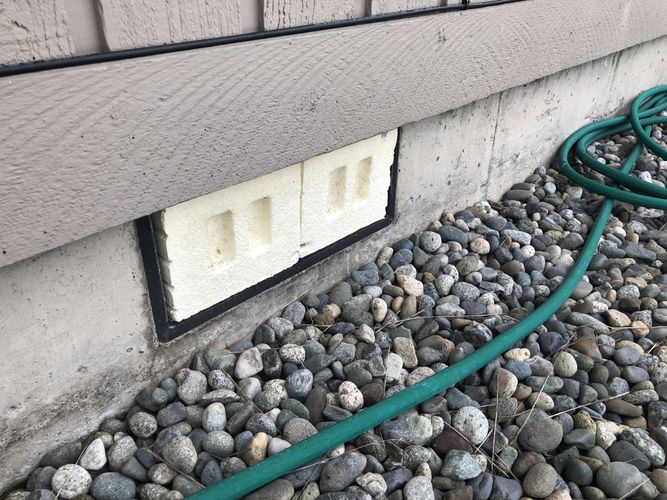  | 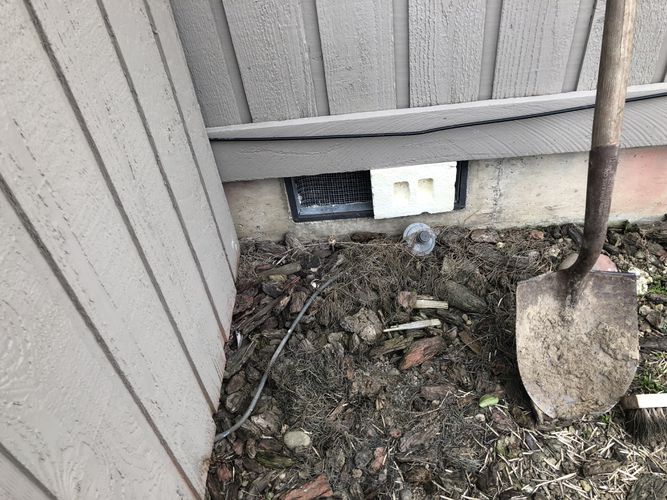  |
Posts and Footings
Standard
Insulation
Insulation Type Fiberglass
Approximate R-Value R-19
(CS-2) Repair: Roughly 40% sub-floor insulation in the crawl space has been damaged by rodents. Remove all rodent contaminated insulation and re-insulate. This work should be done in conjunction with other rodent remediation measures, I noted two sets of screens indicating that some rodent exclusion work has been done in the past, inquire with the seller about the history of rodent problems and measures taken to deter their activity.
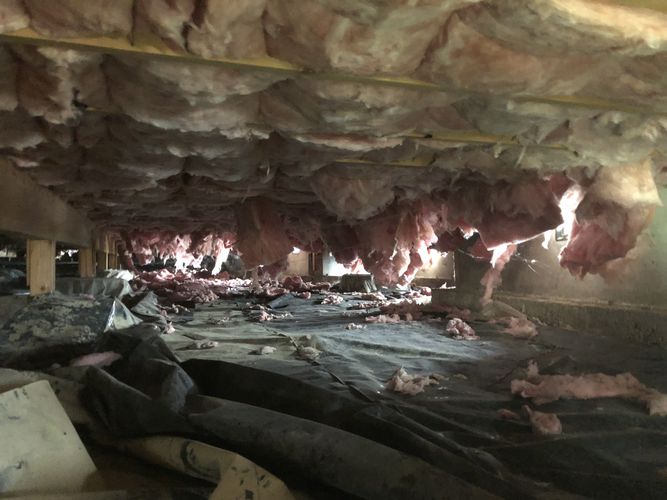  | 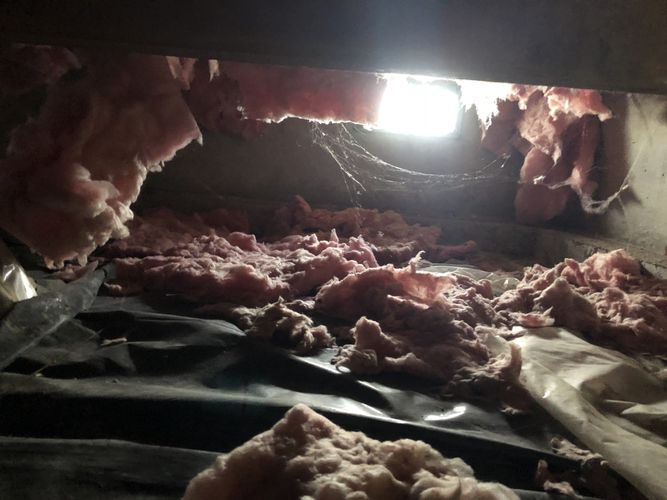  |
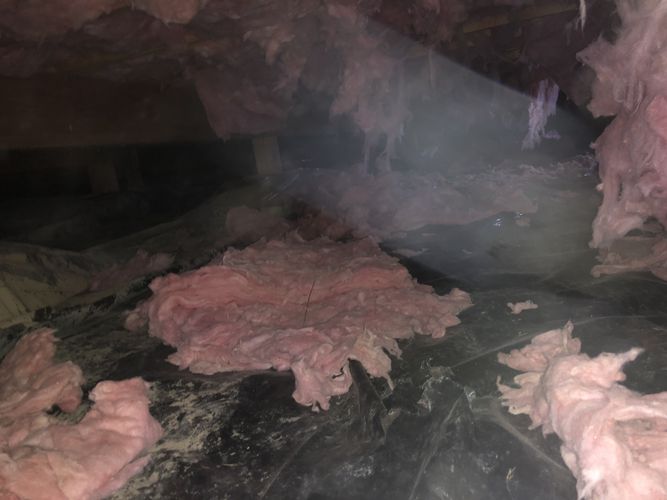  | 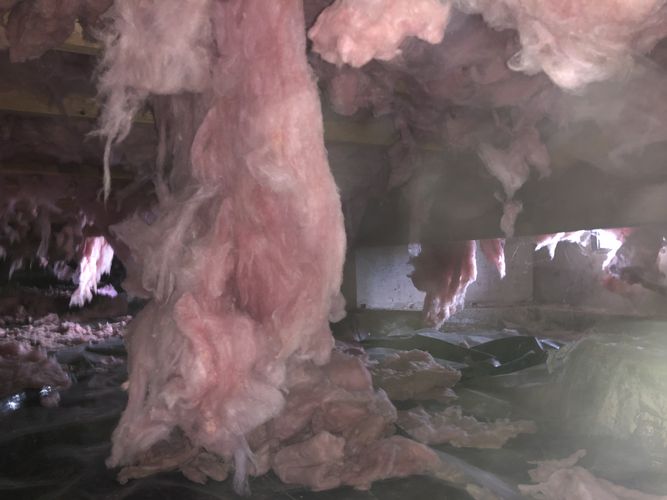  |
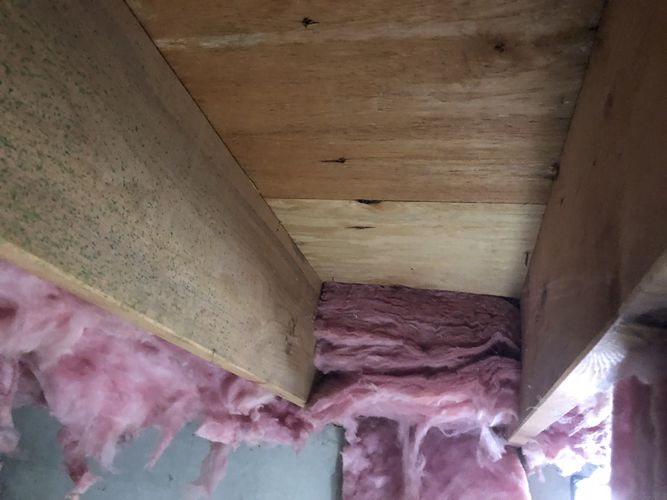  | 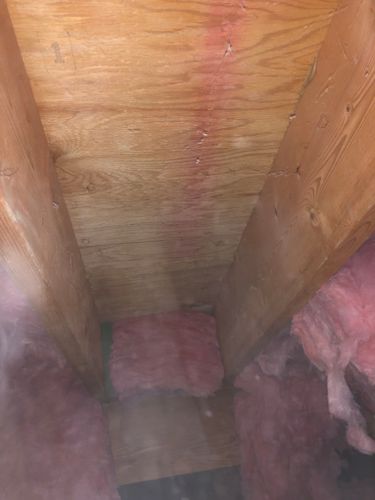  |
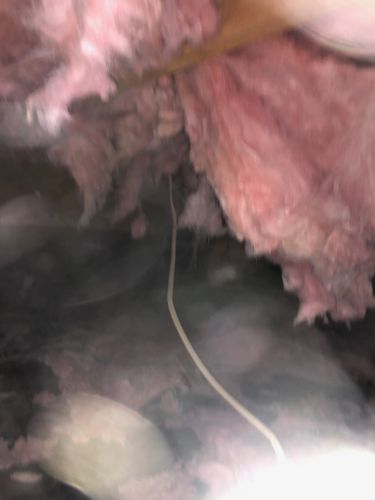  | |
Moisture Conditions
Some signs
Electrical
Left Garage Panel
Volts 120/240
Service Drop Underground
Meter Base Amperage 200
Service Entrance (SE) conductor Size Aluminum, 4/0, 200 amps
Main Panel Amperage 200 amps
Electric Service Amperage 200 amps
Main Electric Panel Location Garage
(E-1) Major Concern: Corrosion was noted on the bus bar inside both main electric panels. This risks poor connections and should be further evaluated and repaired as recommended by a licensed electrician.
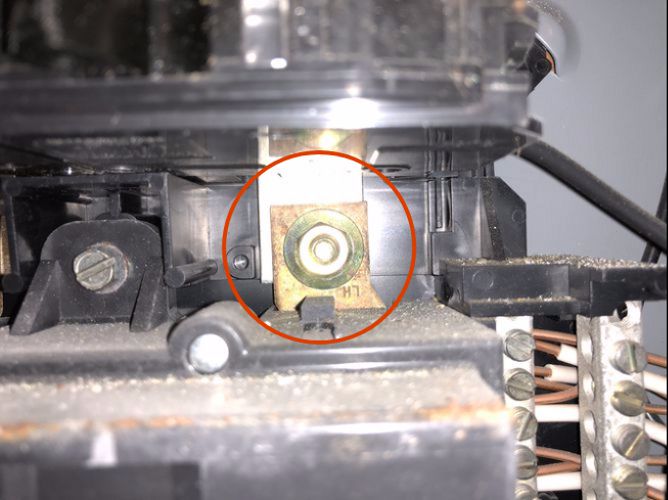  | 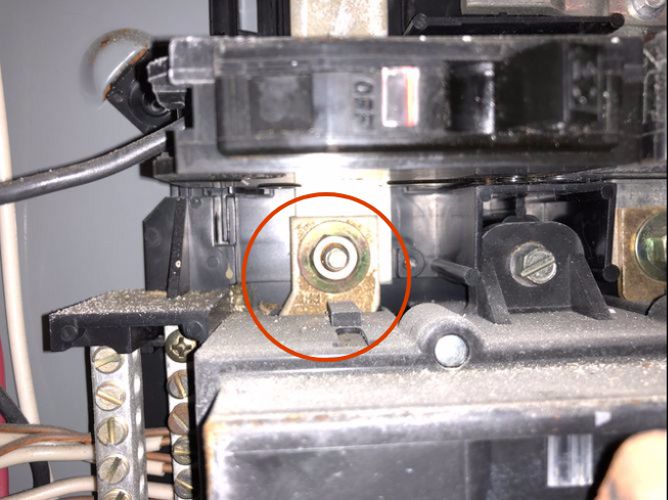  |
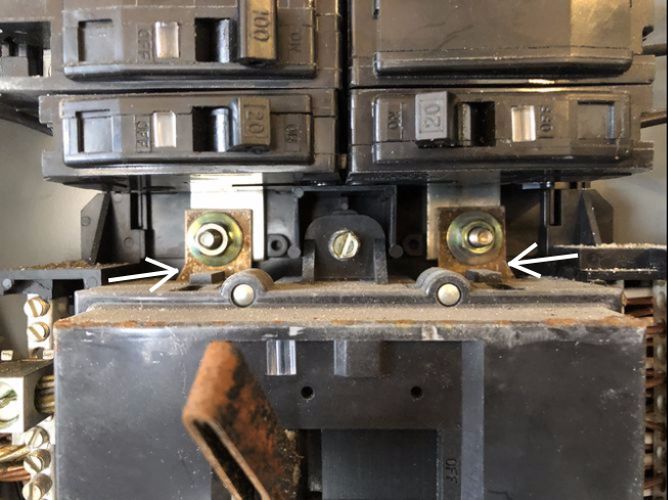  | |
Right Garage Panel
Volts 120/240
Service Drop Underground
Meter Base Amperage 200
Service Entrance (SE) conductor Size Aluminum, 4/0, 200 amps
Main Panel Amperage 200 amps
Electric Service Amperage 200 amps
Main Electric Panel Location Garage
Sub Panels
Sub-panel
Sub-panel Main Conductor Aluminum, 1/0, 125 amps
Sub--Panel Amperage 125
Sub-Panel Location Spa Closet (off right side exterior wall)
Branch Wiring
Wire Material Copper and Multi-strand Aluminum
Wiring Method Non-metallic sheathed cable, Armored BX cable, Rigid
Receptacles and Fixtures
Inspection Method Random Testing
Outlets Three wire outlets
(E-3) Improve: Updating the old exterior receptacle covers to modern "in-use covers" with weather proof cover plates and GFCI protection is recommended. In addition I noticed one receptacle missing a cover entirely.
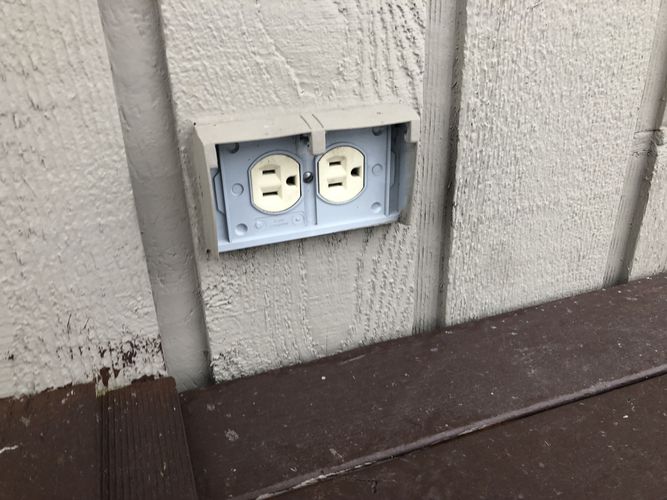  |
(E-5) Repair: The cover plate for the junction box is inadequate as openings were noted in the cover plate. Use cover plates that prevent access to this wiring.
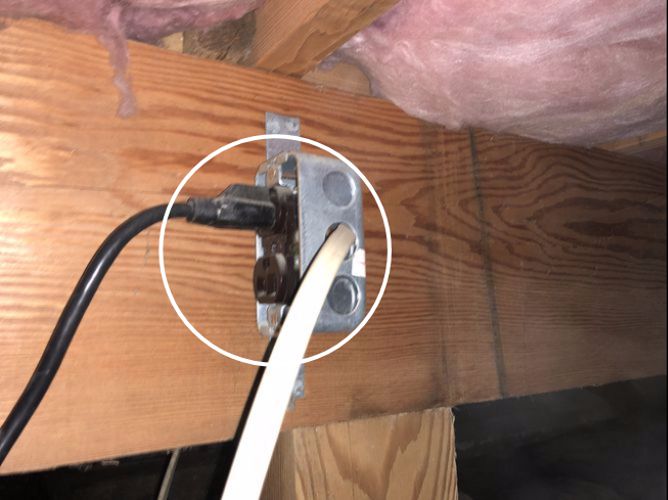   See middle of crawlspace |
See middle of crawlspace |
Smoke and CO Alarm Systems
Smoke Present, CO Missing
(E-6) Repair: The installation of carbon monoxide detectors is recommended for all homes that have fuel burning appliances such as gas or oil furnaces, gas water heaters, gas ovens and cook-tops, gas fireplaces and wood stoves. In addition, Washington State law (WAC 51-51-0315) now requires UL 2034 approved carbon monoxide detectors in all homes and condominiums being sold in Washington State. Location should be outside of all sleeping areas and one on each floor of the home. Best practices are to have these detectors hardwired with a battery back-up - though generally installation must meet manufacturer's specifications. Carbon monoxide is a colorless, odorless gas that can cause sickness, nausea and potentially death. For more information, consult the Consumer Product Safety Commission at 1-800-638-2772 (C.P.S.C.).
Grounding Electrode / Conductor
Could Not Confirm
Fuel Storage and Distribution
Oil Storage
None noted
Propane Storage
None noted
Gas Meter
None noted
Gas, Propane and Oil Piping
(FSD-1) Improve: Abandoned gas piping was found. Have this pipe removed or properly terminated as needed.
Heating, Cooling and Fireplaces
Heating System
Energy Source Electricity
(HCF-1) Repair: A recalled model of Cadet wall heater was noted - and 4 inoperative baseboards in total. All recalled Cadet heaters should be repaired or replaced as recommended by the Cadet Recall. These heaters are a latent fire hazard until serviced or replaced. For more information on the Cadet recall call 800-567-2613.
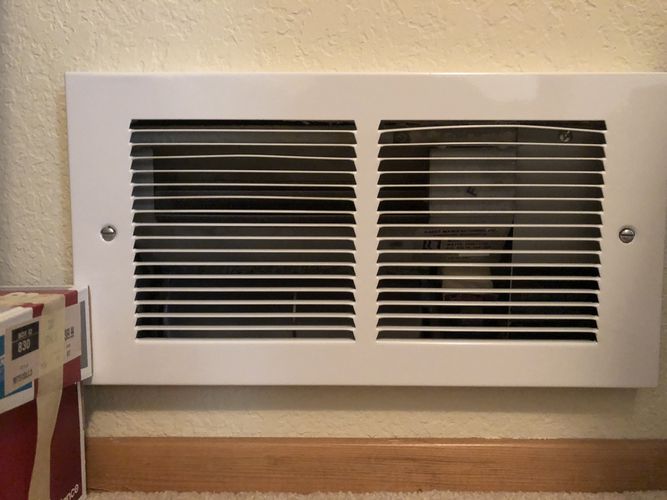  | 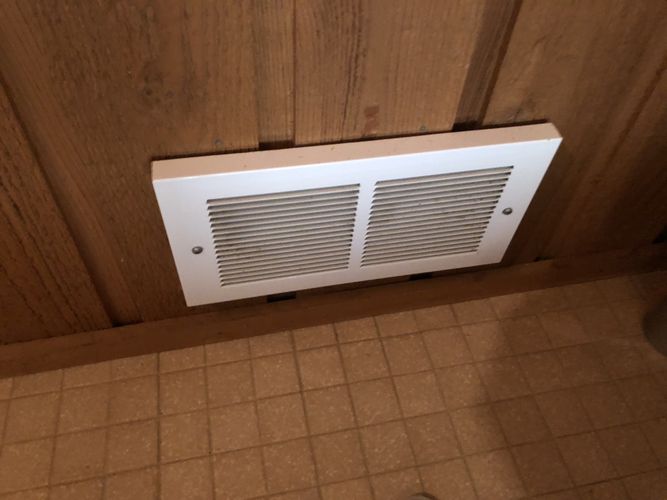  |
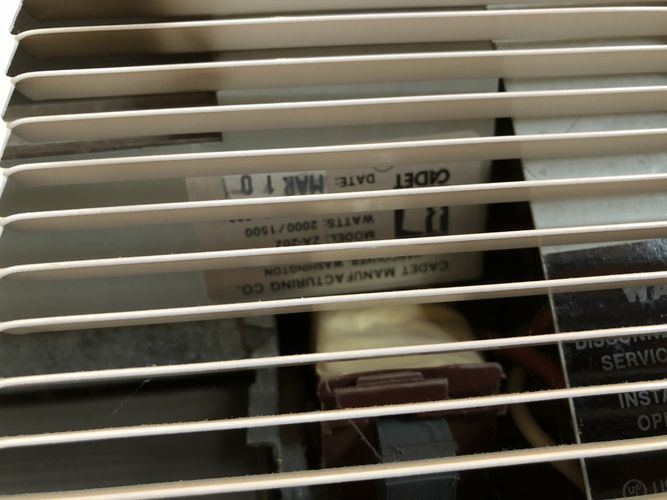  | 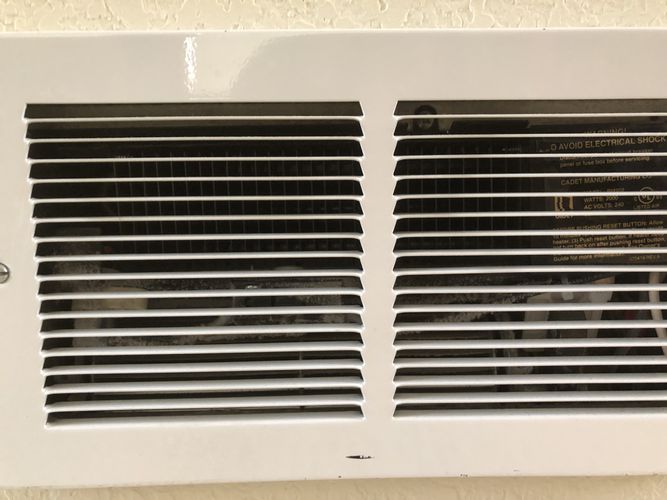  |
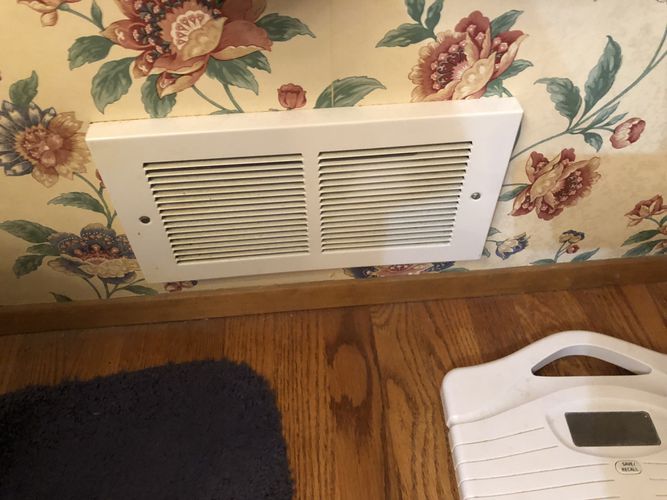  | |
Cooling Systems / Heat Pumps
None Noted
Heating / Cooling Distribution Systems
Heat Source in Each Room Present
Distribution Method Baseboard heaters
Additional Heat Sources
None noted
Gas Fireplaces
Present
Fireplace Types Sealed gas log fireplace
(HCF-3) Repair: I could not test the gas log fireplaces during inspection today as there was no propane tank present. The installation looks to be done by an amateur or homeowner
(HCF-4) Due Diligence: Traces of vermiculite insulation was noted in the fireplace. This insulation is a mineral that is mined from the earth. Most of this insulation in Western Washington comes from a mine in Libby Montana that was contaminated with asbestos. A recent class action law suit alleged that this insulation is unsafe and could expose home owners to asbestos fibers. According to the EPA, there is no safe level of exposure to asbestos. At the time of inspection it appeared as though the material was limited to this area, I checked underneath the attic insulation that was blown in and found no trace of vermiculite. Inquire with the sellers for more information. For more information about vermiculite insulation see: http://www.zonoliteatticinsulation.com/.
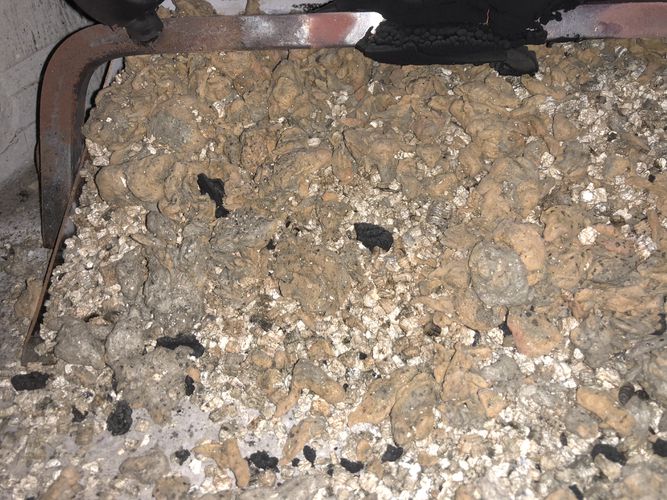  | 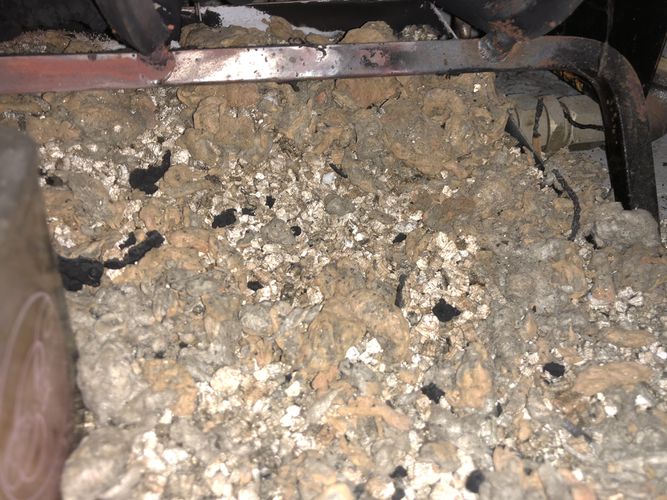  |
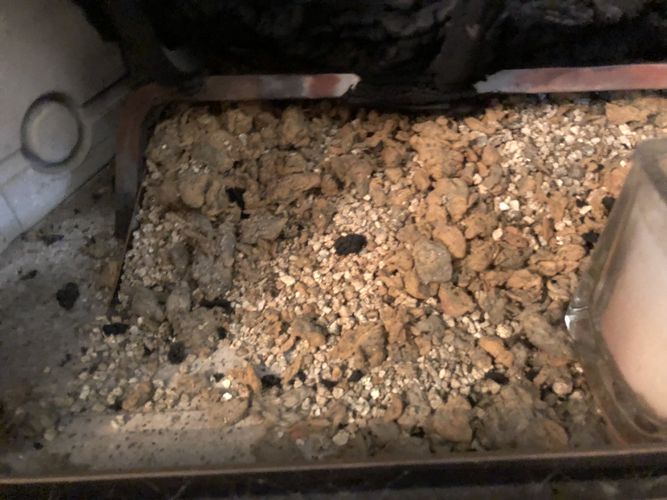  | 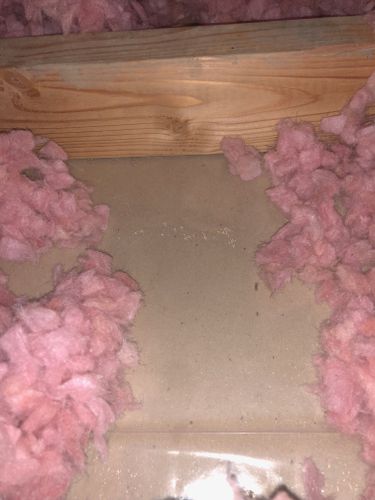  |
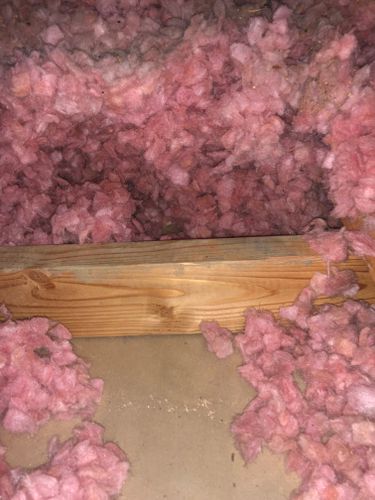  | 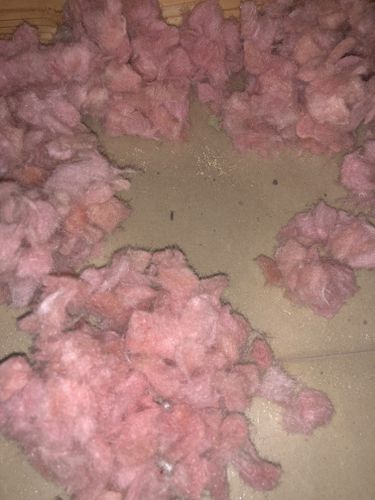  |
Plumbing
Water Service Supply
Pipe Material Plastic
Well or Public Supply Public
Water Pressure 86 PSI
Pressure Reducing Valve None noted
Main Water Shut-off Location Garage
(P-1) Improve: When static water pressure exceeds 80 PSI, a pressure reducing valve is recommended to prevent accidental damage to the plumbing system. No reducing valve was found during inspection and water pressure is too high. Hire a licensed plumber to further evaluate and repair high water pressure as needed.
Distribution Pipe
Pipe Insulation Non-Standard
Supply Pipe Materials Copper
Functional Flow Excellent
(P-2) Repair: The supply pipe insulation is incomplete in the well house. Be sure all supply lines in unheated spaces have been adequately insulated to protect from freezing conditions that could damage the pipes and to prevent heat loss.
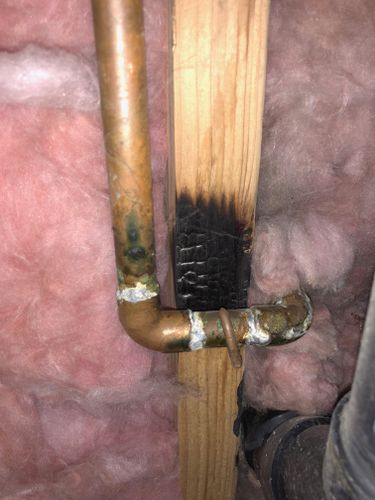  | 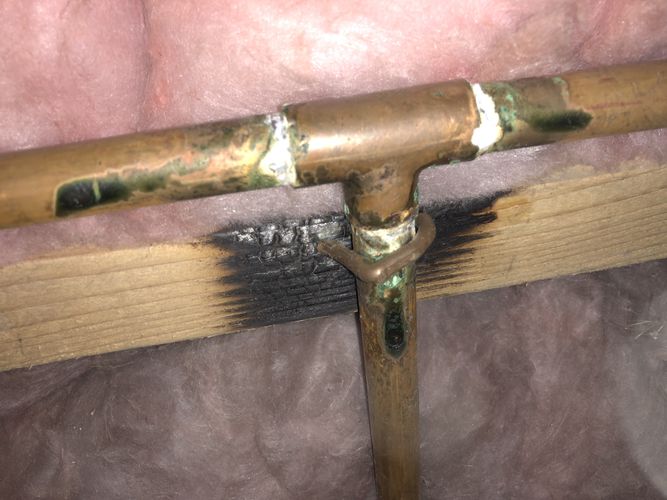  |
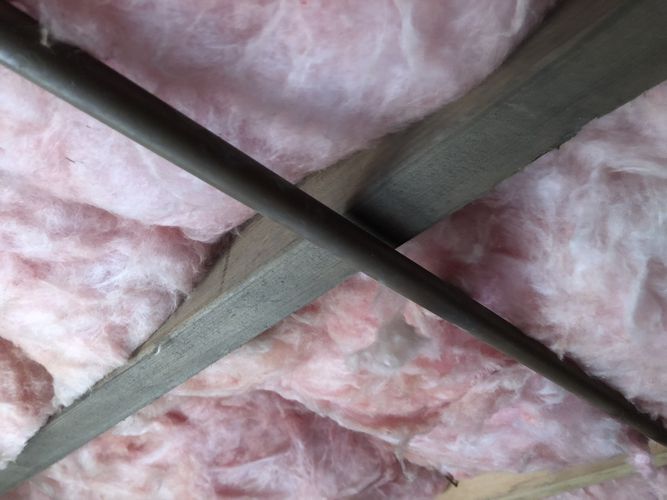  | 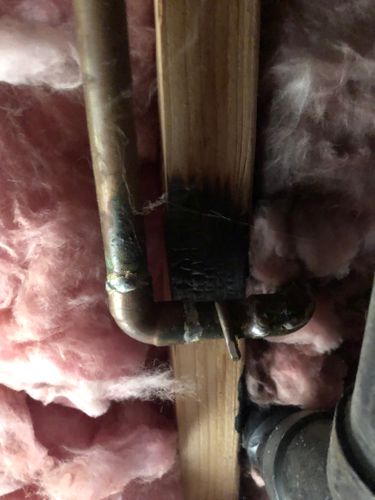  |
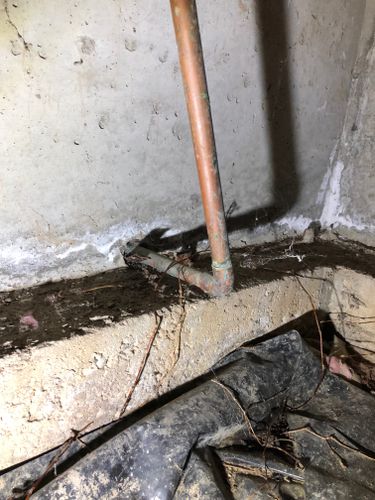  | 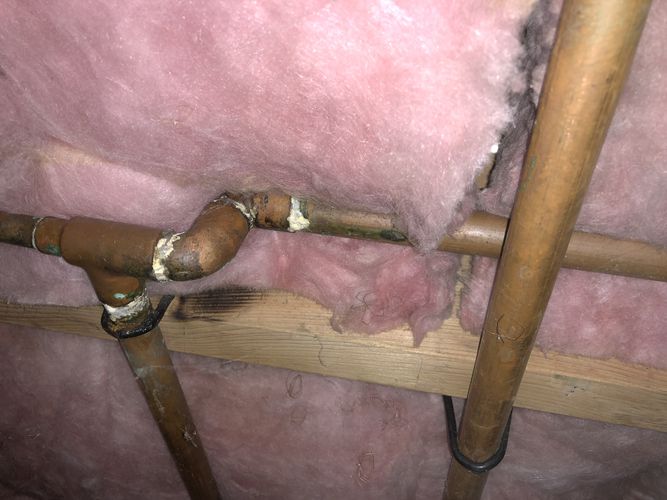  |
Waste Pipe and Discharge
Discharge Type Septic system
Waste and Vent Pipe Materials ABS plastic
(P-3) Due Diligence: This home's sewage appears to employ an on-site private septic system. Please note that an evaluation of this system is beyond the scope of this inspection. I recommend having this system further evaluated by a septic specialist. A company out of Port Townsend called Enviro Check LLC can be reached at (360) 379-9400.
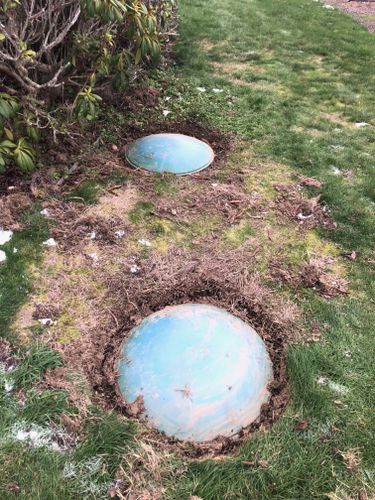  |
(P-4) Repair: The waste plumbing appears to be triple trapped. This can inhibit proper venting of the waste piping and inhibit drainage or even siphon the trap and allow sewer gas to enter the house. Have this further investigated and repaired as recommended by a qualified plumber.
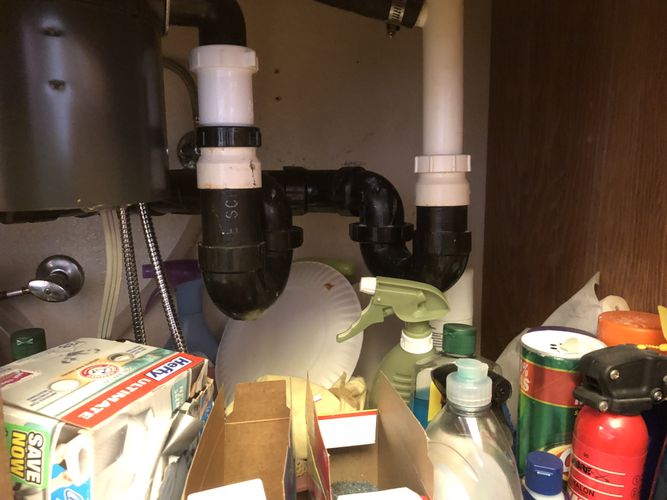  | 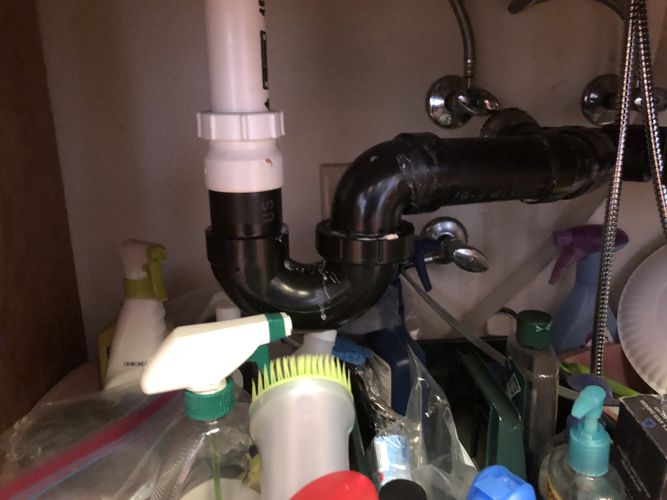  |
Water Heater
System Type Tank
Manufacturer Bradford-White
Water Temperature 124 F
Size 50 gal
Age 6 years
Energy Source Electricity
Temperature Pressure Relief Value Present - Not Tested
(P-5) Major Concern: Install listed seismic straps to support the water heater in the event of an earthquake - plumber's tape is not considered an adequate support. Two listed seismic straps are recommended one for the top 1/3rd and one for the bottom 1/3rd of the tank.
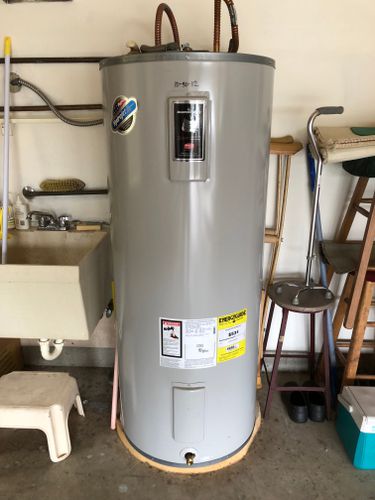  |
Exterior Hose Bibs
Operating
Additional Sinks
None noted
Sewage Ejector Pumps
None noted
Washer
Tested
Dryer
Tested
Power Source Electric
Duct to Exterior Ducted
(P-6) Repair: The dryer duct behind the clothes dryer appears to be leaking and needs to be repaired. Seal all air leaks and clean all lint up from behind the dryer.
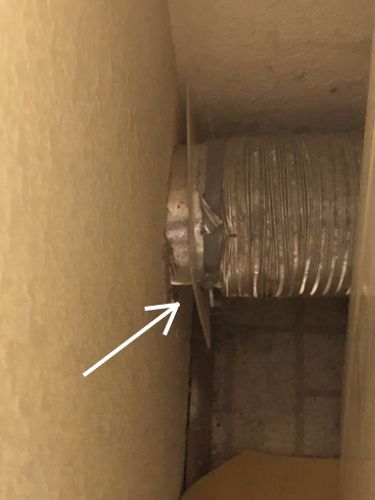   Mounting flange is loose | 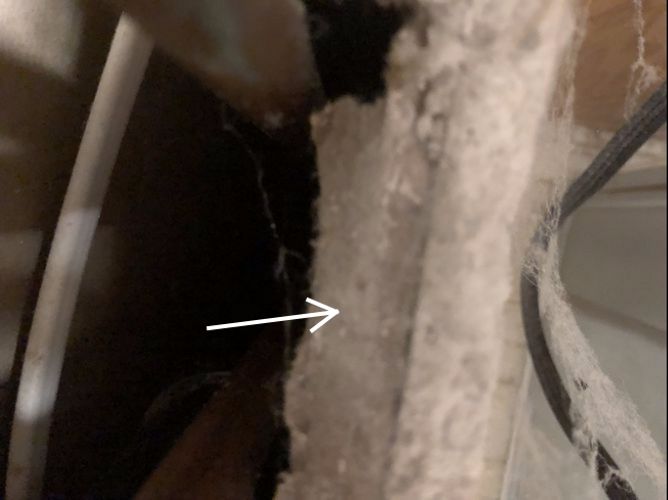   Lint accumulation |
Mounting flange is loose | Lint accumulation |
Additional Plumbing
Present, Laundry tub
Bathroom(s)
Sinks and Cabinets
Tested
(B-1) Repair: A slow drain was noted at the bathroom sink indicating that an obstruction may exist or the venting is inadequate - in the hall bathroom. I did note some gurgling / bubbling during draining, a red flag that can indicate inadequate venting. Have this drain further evaluated and repaired by a plumbing contractor.
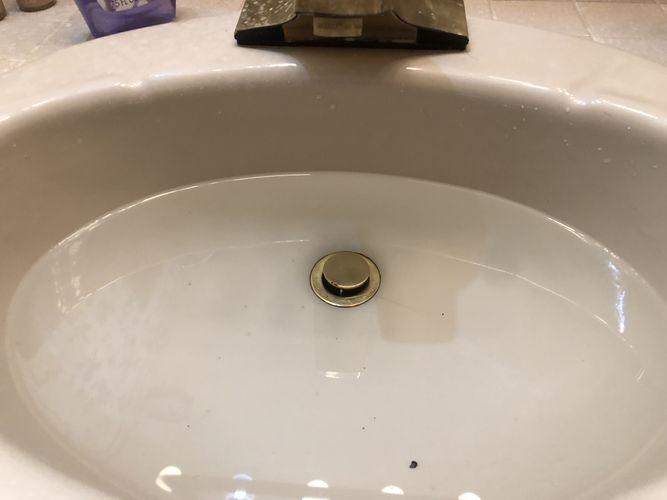  | 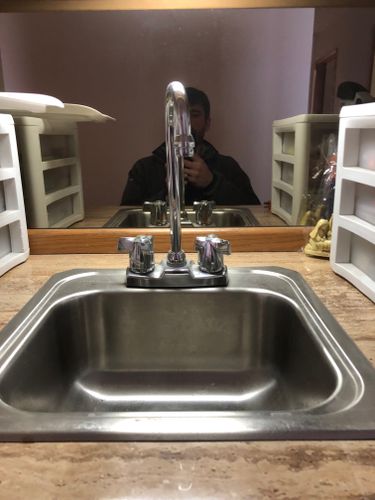  |
(B-2) Repair: The sink in the bathroom and wet bar are inoperative and requires further investigation and repair by a licensed plumber.
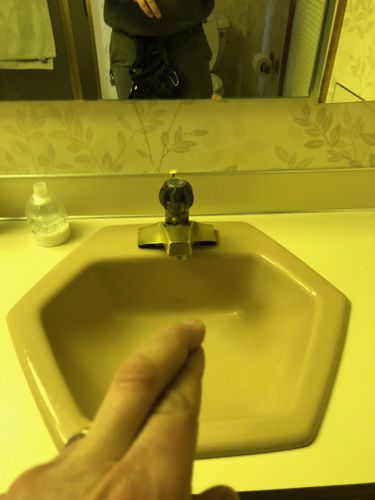  |
Toilet
Tested
(B-3) Note: During the inspection I noted a non-standard and updated flesh mechanism to the master bath toilet. The toilet functioned as it should.
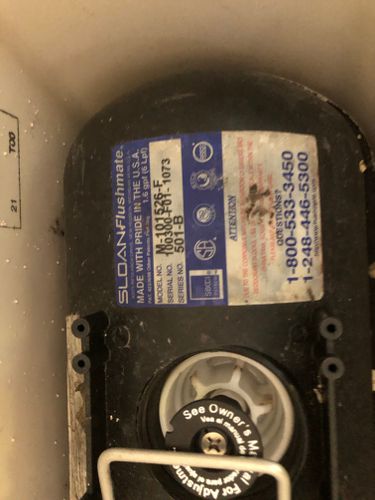  |
Bathtub / Shower
Tested
(B-4) Improve: I noted mildew in the master bath area. Improve the fan knob and ensure that it is running when warm, moist air from the shower is in the room. Clean and remove all mildew with disinfectant.
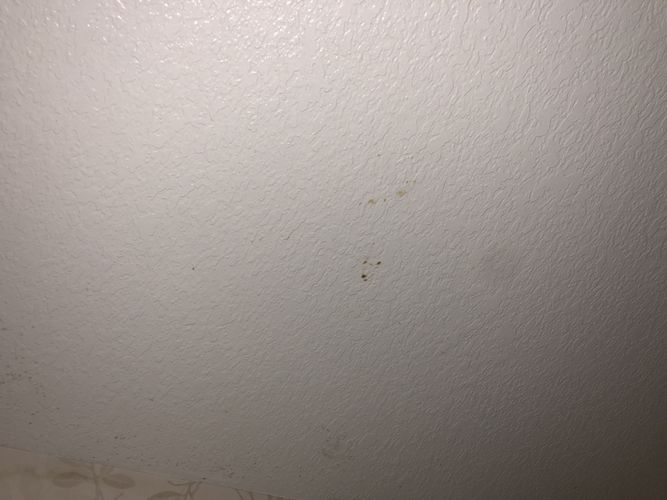  | 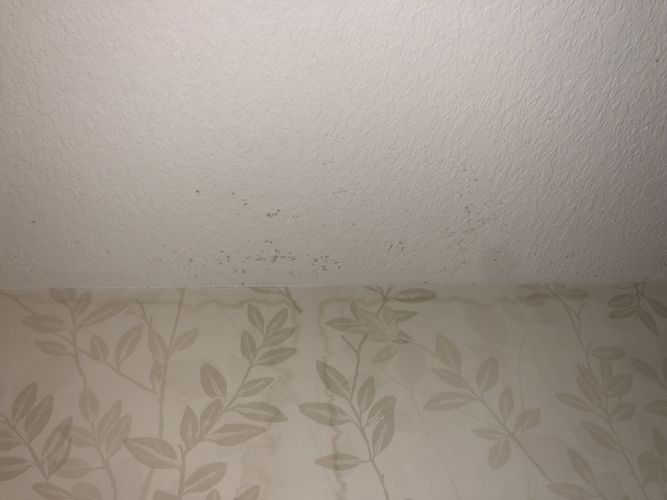  |
Bathroom Ventilation
Type Bath fan
(B-5) Improve: Inoperative fan knobs were noted in the hall and master bath. There is a set screw on the knob that should be adjusted to encourage use of the bath fans
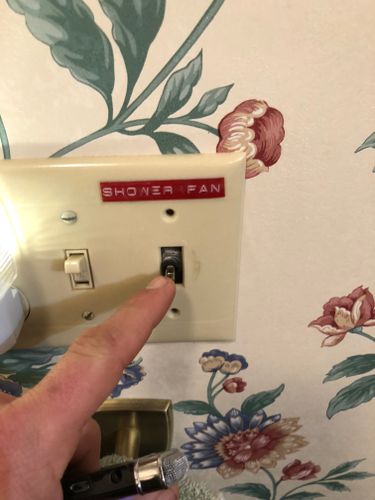  | 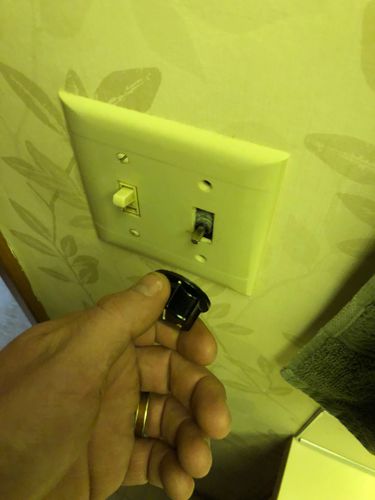  |
General Bath Condition
Standard
Kitchen
Sinks and Faucets
Tested
Cabinets and Countertops
Countertop Material Corian
Cabinet Material Wood
Ventilation Method
Fan ducted to exterior
Appliances
Refrigerator Operating
Dishwasher Operated
Dishwasher Air Gap Present
Range/ Oven /Cook-tops Electric
Disposer Operated
(K-2) Repair: The built-in electric ovens are older. Updating could be needed at any time. And the upper element was inoperative.
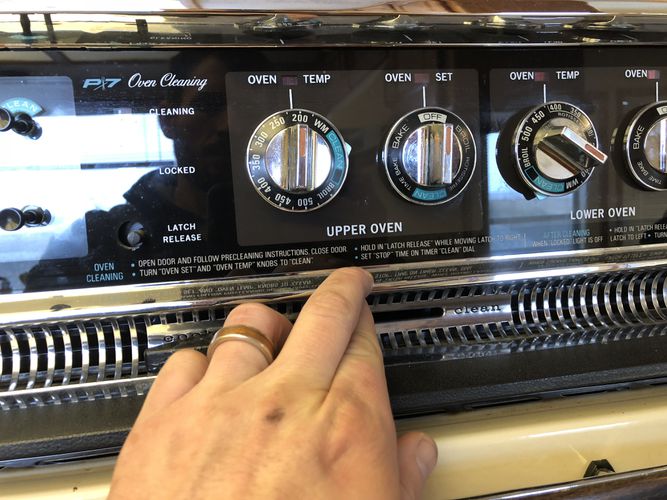  |
General Kitchen Condition
Standard
Interior
Floors
Floor Materials Hardwood, Carpet, Tile
Floor Settlement Minor
(I-1) Repair: The carpets are dirty and need to be cleaned. Please note that some of these stairs may not come out and you may want to replace carpets.
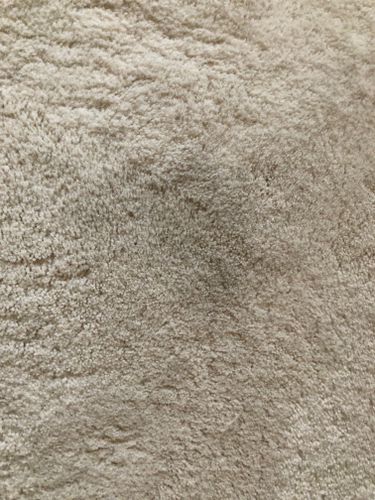  |
Walls, Ceilings and Closets
Wall and Ceiling Materials Drywall
(I-2) Monitor: Cracks were noted in the walls. Cracking can be due to routine settlement or moderate seasonal expansion and contraction of the home. It can also be related to workmanship and nailing of framing and drywall. The seasonal types of cracking can be most problematic as they will tend to re-open after repair. Repair and paint cracks as needed and monitor.
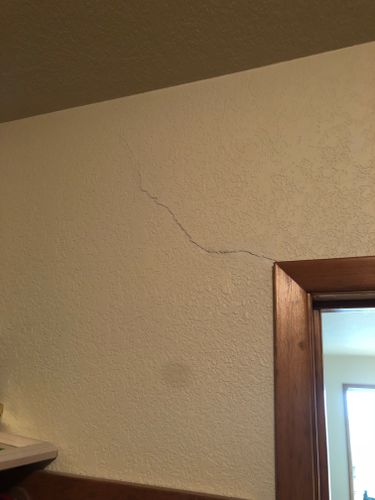  | 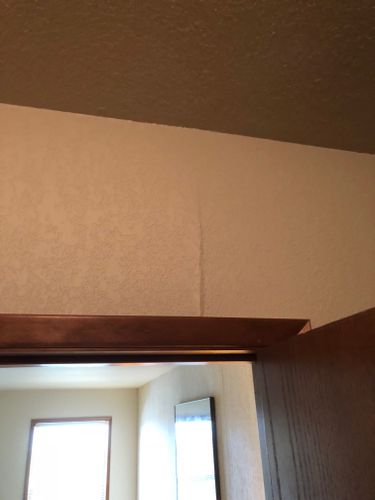  |
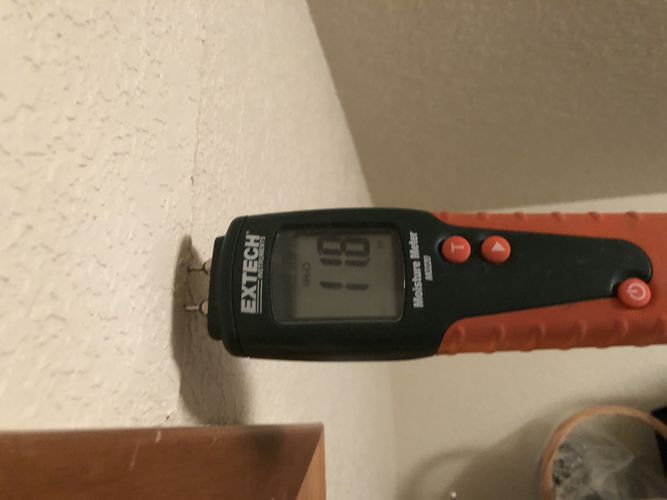  | 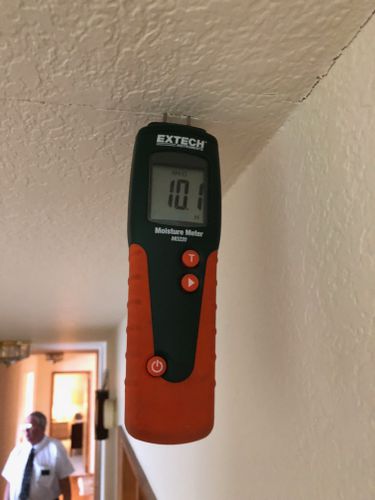  |
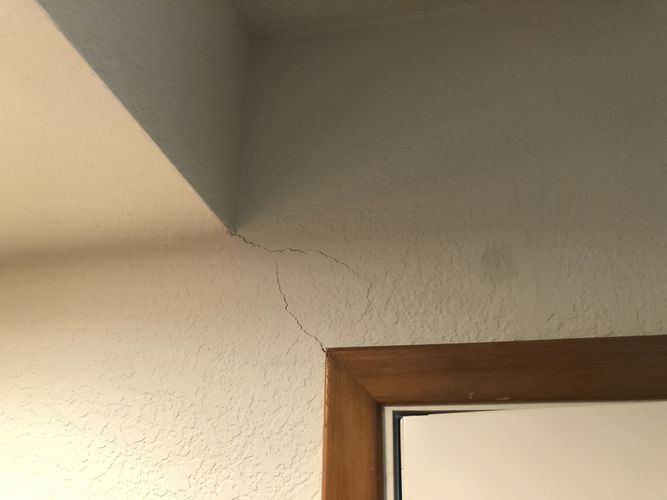  | 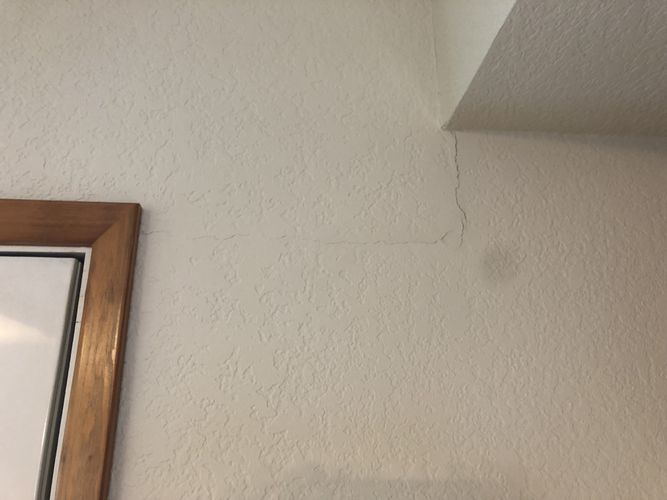  |
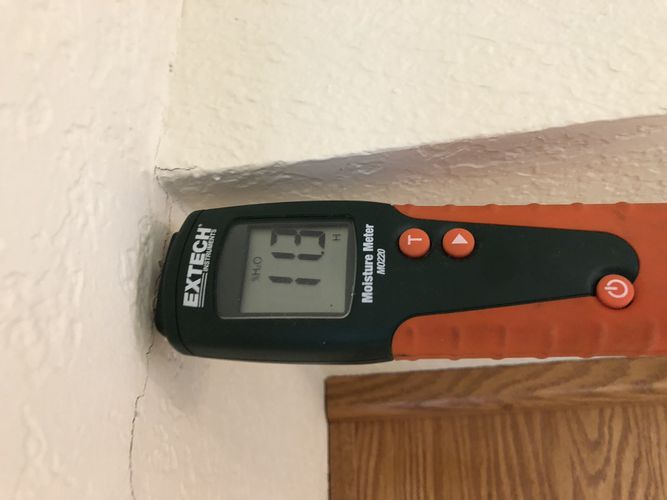  | |
Stairs and Railings
Standard
Interior Doors
Solid and Hollow Core
(I-3) Improve: Localized damage was noted to the door trim in the garage, this trim should be repaired or replaced.
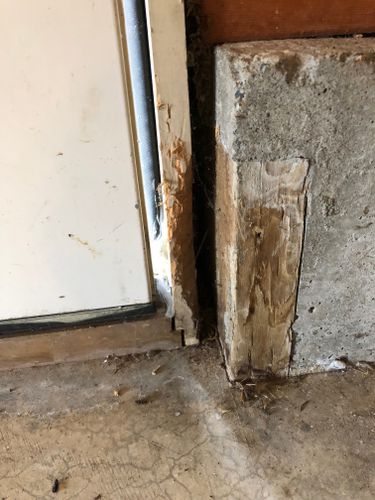  |
Windows
Window Glazing Double pane
Interior Window Frame Metal, Wood
Window Styles Sliding, Fixed pane
(I-4) Monitor: Signs of window leakage was noted. These stains were dry at the time of inspection but may indicate prior leakage. Inquire with the seller for any history of leakage here and monitor as some repair could be needed. At the time of inspection no water damage was found and visible red flags do not merit repair.
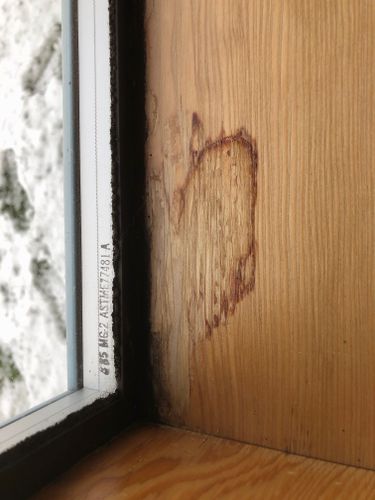  | 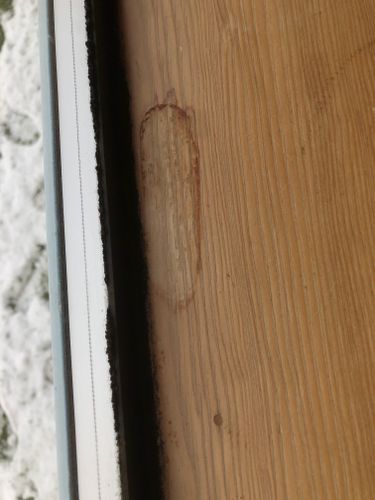  |
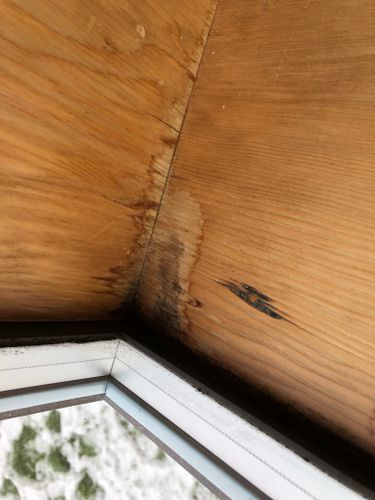  | 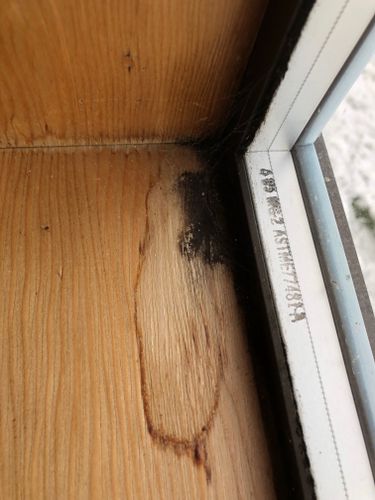  |
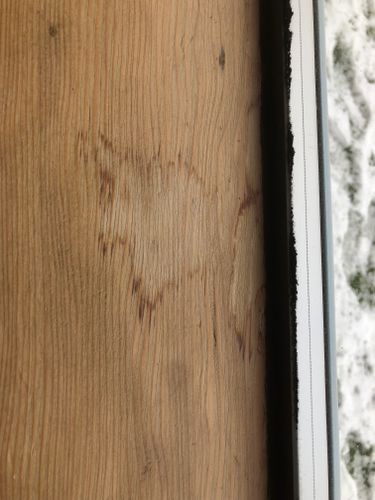  | 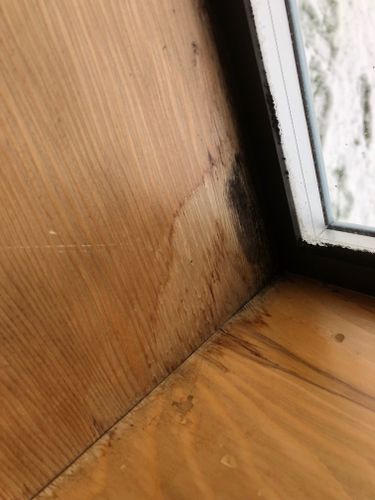  |
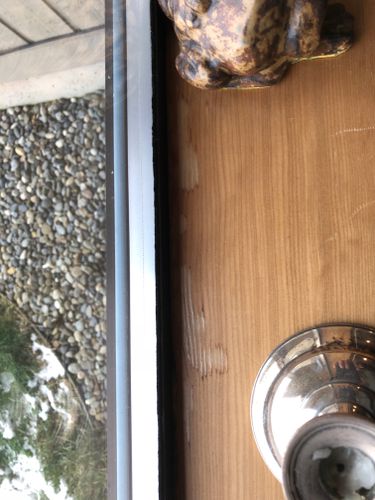  | 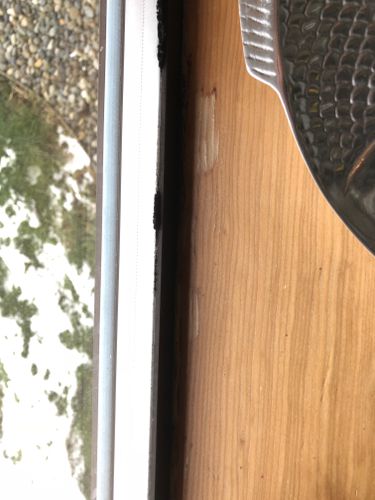  |
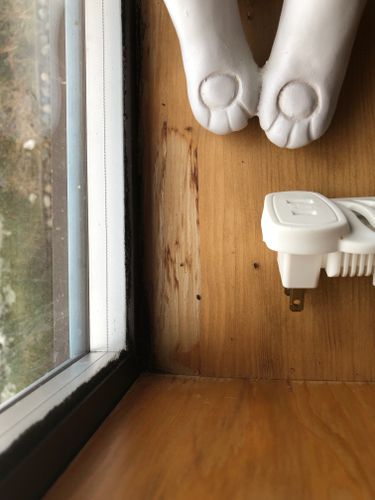  |   |
Mechanical Ventilation
Bath Fan Ducting Ducted to exterior
Kitchen Fan Ducting Ducted to exterior
Heat Recovery Ventilator (HRV)
(I-5) Efficiency: This building has a heat recovery ventilator system for fresh air control. This is a high quality and energy efficient fresh air system for the home. Most of these systems require cleaning air filters every three months or so and often annual servicing. I recommend having this system serviced. It was operating during inspection but looks pretty dirty - its probably been a while since filters were cleaned. It was also noted that at the time of the inspection, the unit was not in use. These systems require a qualified HVAC technician to use.
From the manufacturer: "EZ VENT 300 Series: The EZ VENT 300 series offers units that... are 85% effective and have rated airflow exchanges of 145 to 415 CFM. The two functions of an HRV are:
- To improve indoor air quality
- Energy Efficiency
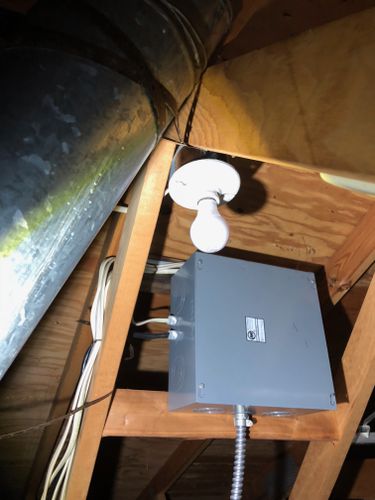  | 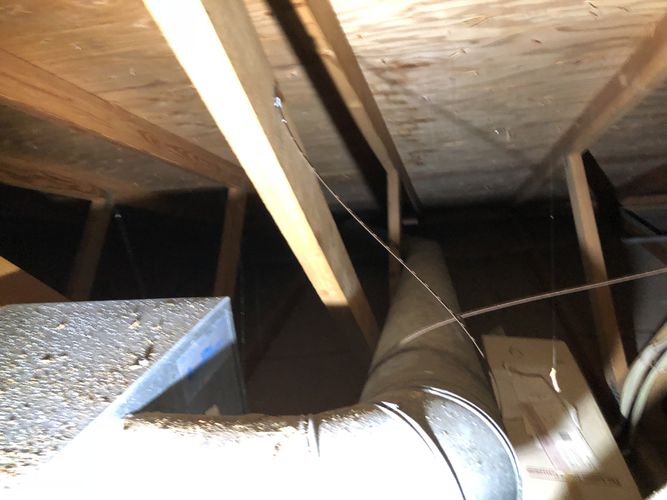  |
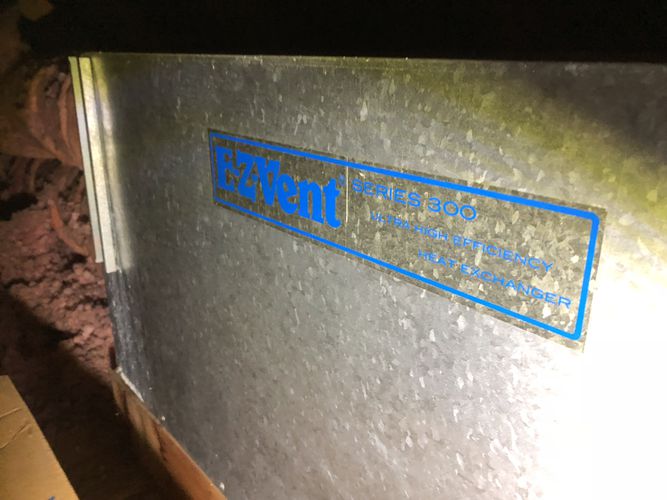  | |
Roof/Attic
Roof Materials
Method of Roof Inspection Walked on roof
Roof Style Hip
Roof Materials Architectural grade composition shingle
Approximate Age of Roof 5-10 years
(RA-1) Repair: This roof was not fully visible on the north end for inspection today due to snow and ice cover. I recommend having the roof inspected at a later time when the snow has cleared off.
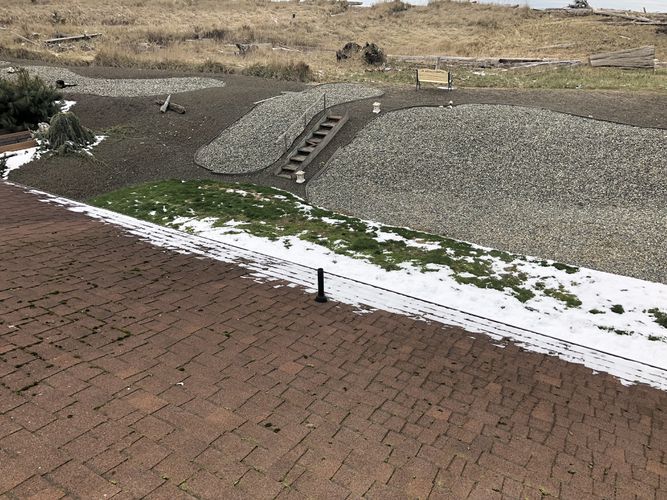  | 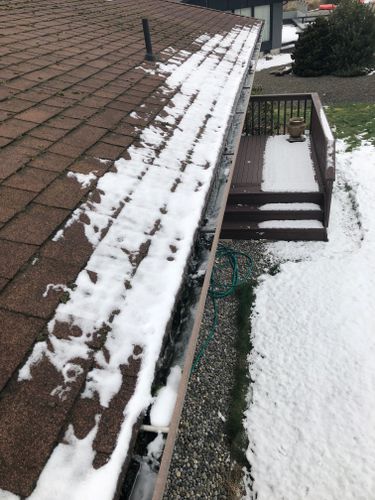  |
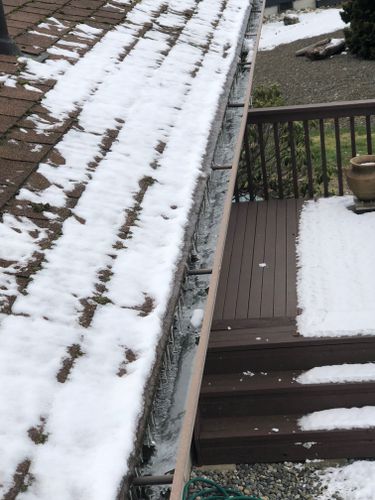  | 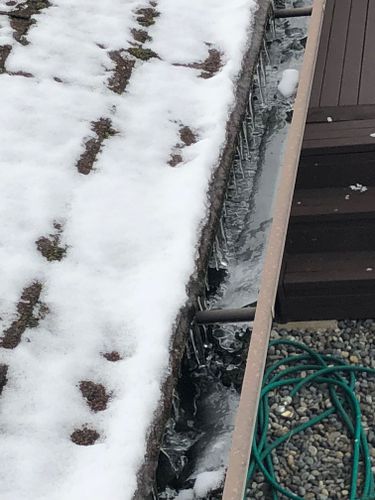  |
(RA-2) Improve: Moss build-up was noted on the roof. This is bad for the roof covering and decking as it can trap moisture on the roof and can inhibit drainage off the roof. Moss removal is recommended. Products such as Tide are not recommended as the bleach in these products can deteriorate the shingles. Pressure washers should not be used to clean the moss as they can damage the shingles unless the moss has been killed prior to washing. Only very low pressure should be used to clean the roof of moss and chemicals should be used to kill the moss prior to removal. One product people use to kill the moss is baking soda. Hire a professional roof cleaning service to clean and service this roof to insure proper control of roof runoff and proper drainage off the roof.
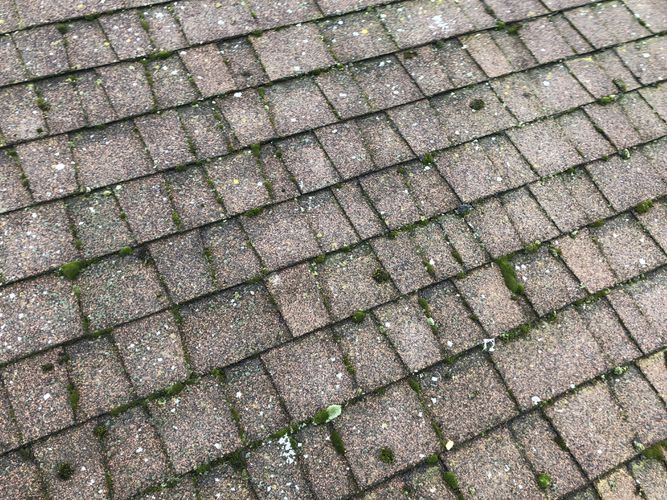  |   |
Skylights
None noted
Gutters and Downspouts
Aluminum
Attic Access
Crawled partial
Roof Framing and Sheathing
Rafters Truss
Sheathing Plywood
Attic Insulation
Insulation Type Fiberglass
Approximate Insulation R-Value on Attic Floor Minimum R38
Attic and Roof Cavity Ventilation
Attic Ventilation Method Ridge vents, Soffit vents, Power ventilator (not in use)
(RA-3) Repair: The screens that protect the soffit vent openings appear to be damaged in places and require repair to insure adequate roof cavity ventilation and to prevent bird and / or rodent entry. Use 1/4 inch wire mesh to seal-up openings from rodents and birds and make sure screens are not blocked by paint or other debris. Refrain from using tight-mesh window screen as this can obstruct air flow.
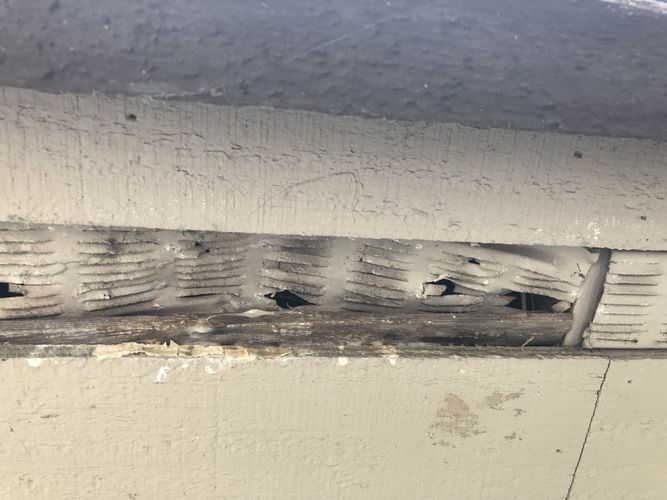   see left side exterior wall |
see left side exterior wall |
Exterior/Garage
Siding and Trim
Trim Material Wood
Siding Material Plywood
Eaves
Plywood
Exterior Doors
Glass panel doors, Solid core
(EG-1) Repair: The exterior door is missing a proper sweep. This is an important feature to keep wind-driven rain, rodents and air from getting under the door. Have this repaired by a qualified general contractor.
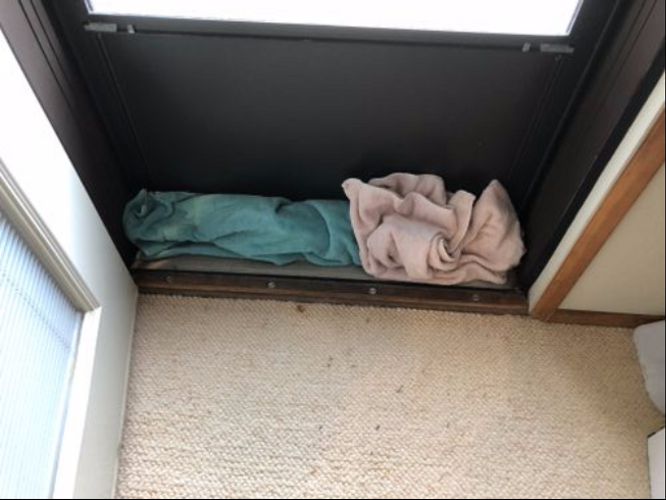  |
Exterior Window Frames
Metal
(EG-2) Repair: During the inspection I noted extensive corrosion to exterior window screens - given the proximity of the home to the Ocean this is not uncommon for a home of this age. The screens should be replaced to prevent corrosion to window sashes. I noted some repair to sashes particularly on the windows leading up to the front door.
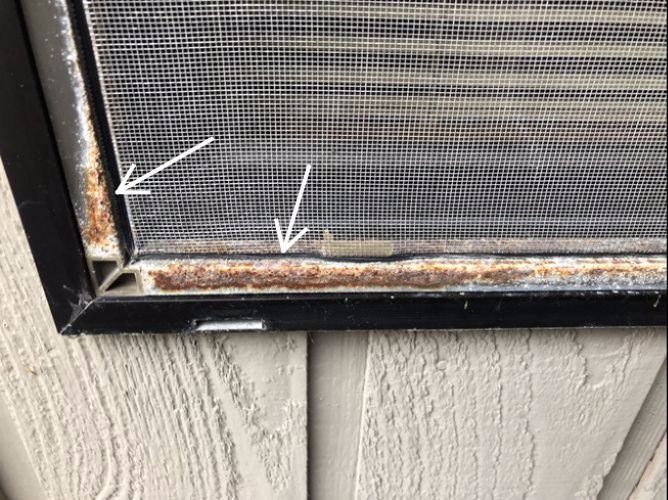  | 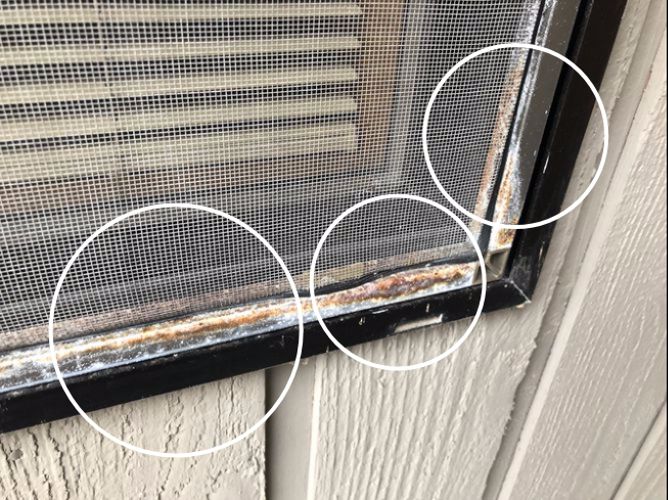  |
(EG-3) Improve: Several places were noted where insulation is obstructing the weep holes in the windows. Be sure all caulking is removed from these weep holes so the window drains properly.
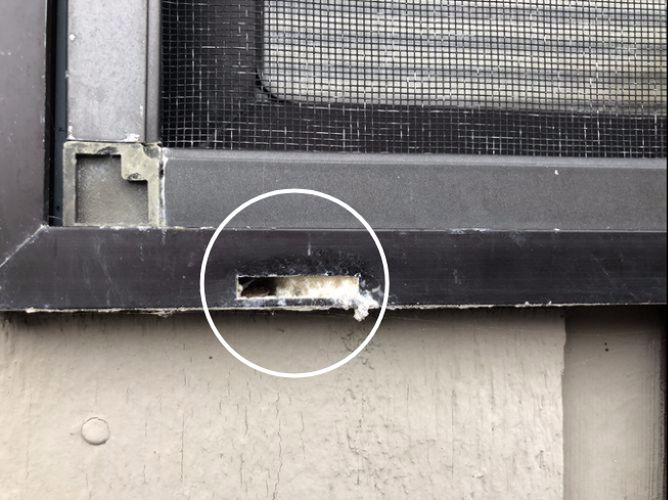  |
Decks and Balconies
Present
Deck Structure Non-treated lumber
Deck Ledger Board Standard
Guardrail None needed
Decking Material Softwood
(EG-4) Repair: The decking on this deck is past its useful design life and is now unsafe. Rotted decking was noted. Budget to remove and replace this decking. Options of replacement include: softwoods decking such as cedar and redwood, tropical hardwoods and synthetic plastic materials. Deficiencies noted include:
- Peeling paint
- Localized rot was noted: replace damaged wood as needed.
- Unsafe steps
- Anobiid exit holes
- Earth to soil contact for wood columns that are rotting
- Anobiid exit holes on wood columns in contact with the ground
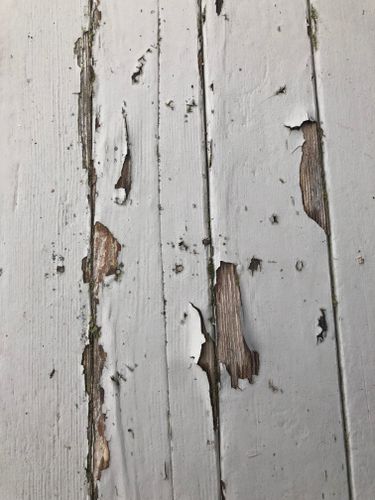   Peeling paint | 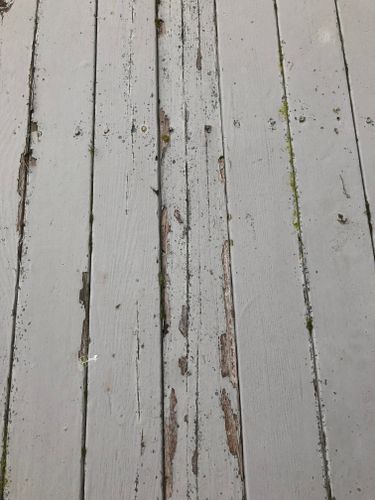  |
Peeling paint | |
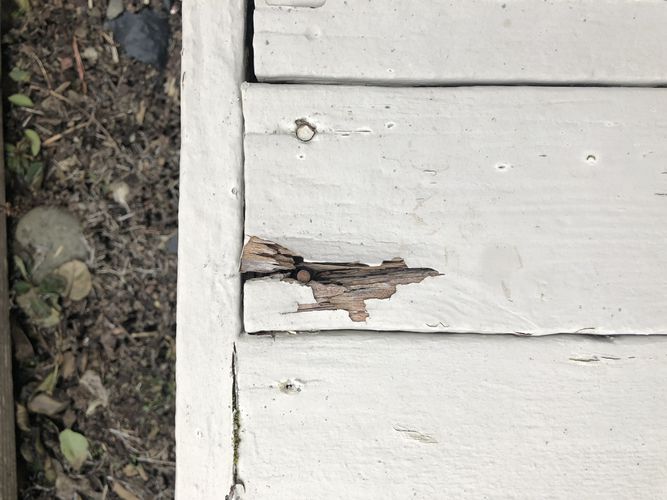   Repair: Localized rot was noted: replace damaged wood as needed. | 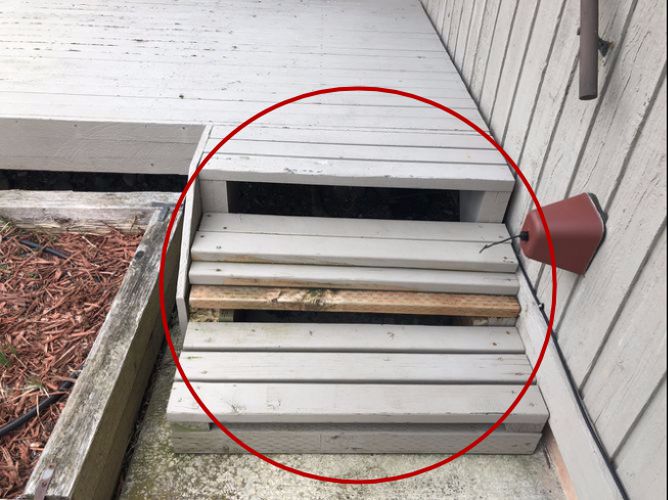   Unsafe steps |
Repair: Localized rot was noted: replace damaged wood as needed. | Unsafe steps |
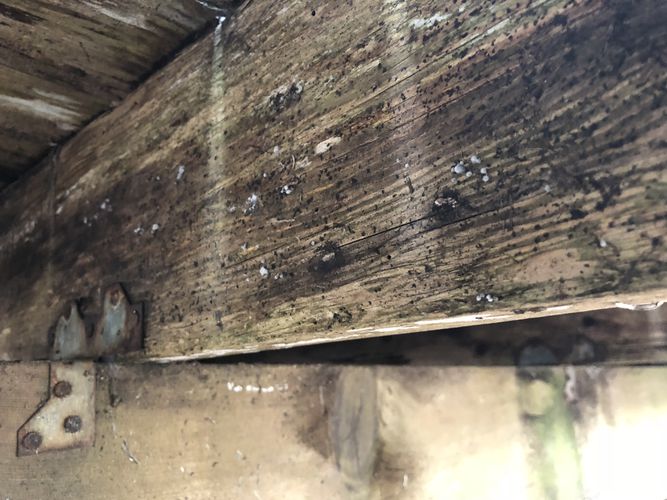   Anobiid exit holes | 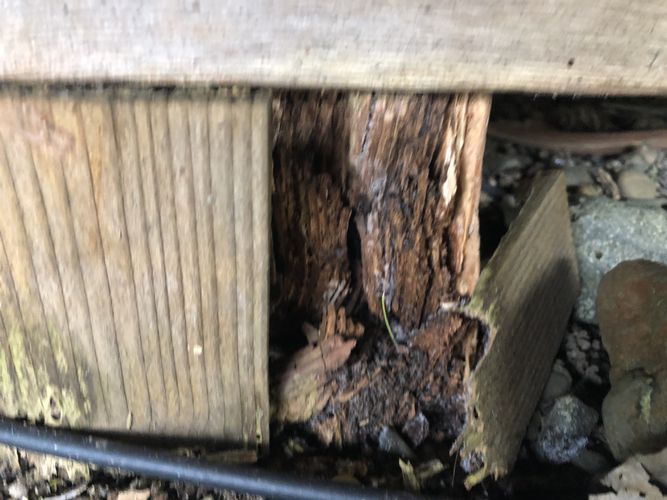   Earth to soil contact for wood columns that are rotting |
Anobiid exit holes | Earth to soil contact for wood columns that are rotting |
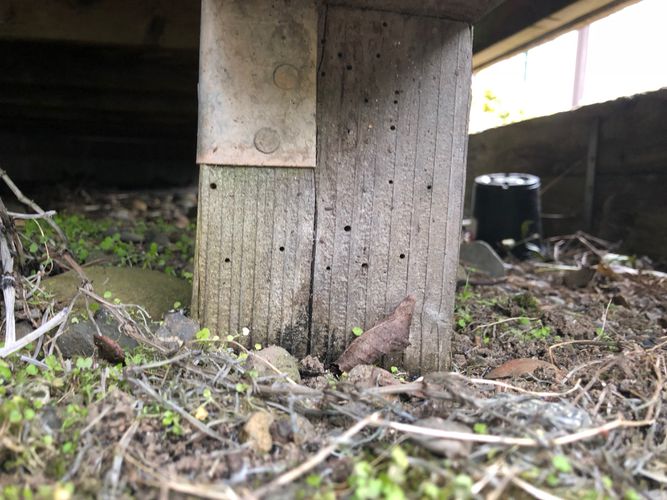   Anobiid exit holes on wood columns in contact with the ground | |
Anobiid exit holes on wood columns in contact with the ground |
Porches
Present
(EG-5) Repair (WDO): Localized rot was noted in the porch. In addition there appears to be a history of anobiid beetle activity in the porch flooring, structure and guard rail. Hire a licensed general contractor to further evaluate and repair.
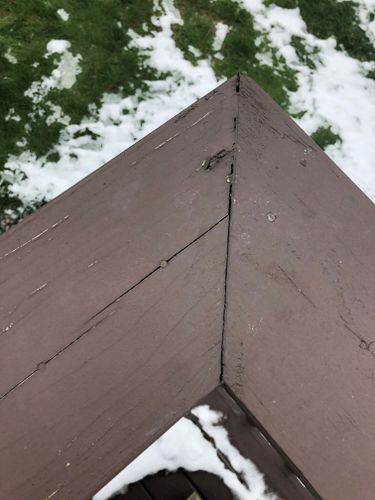  | 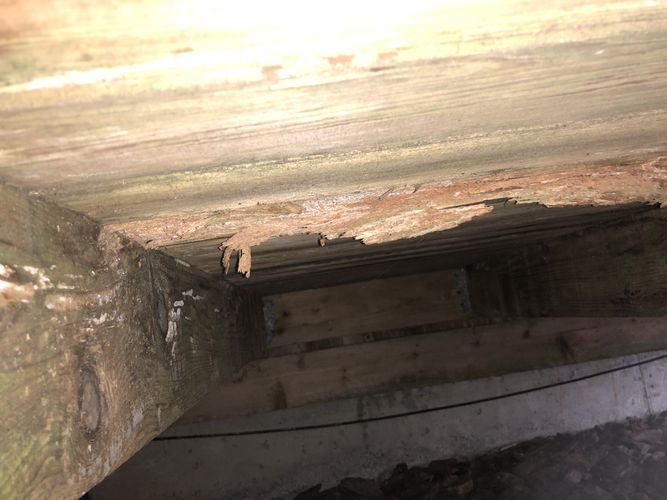  |
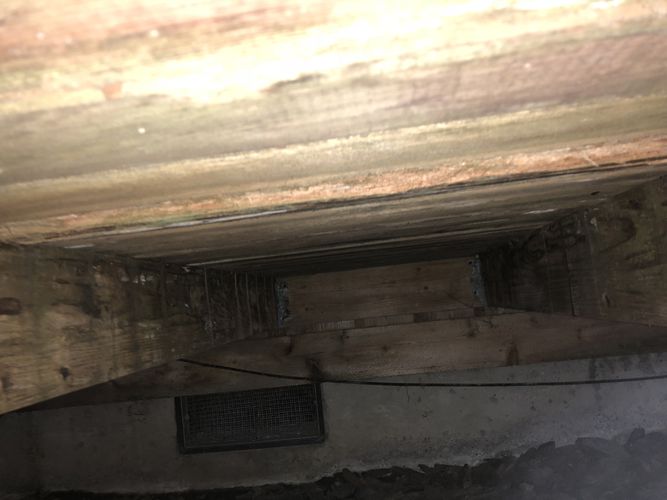  | 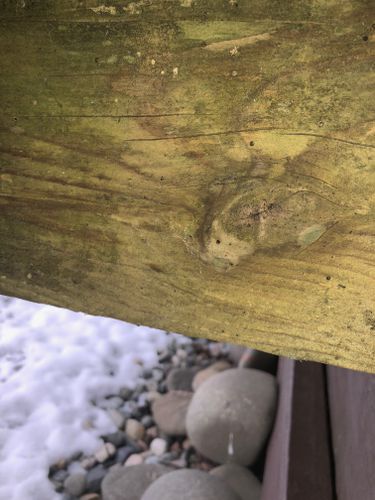  |
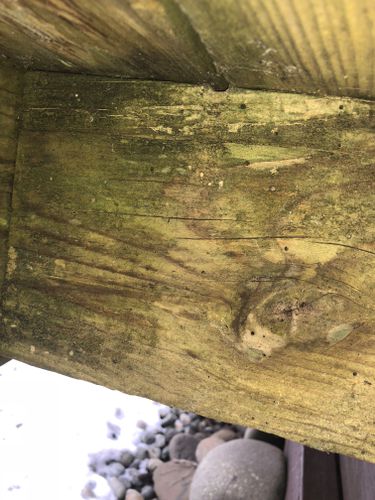  | 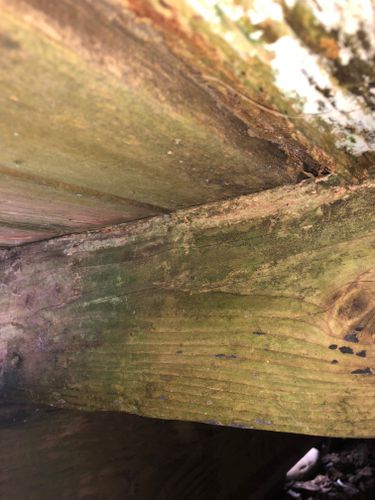  |
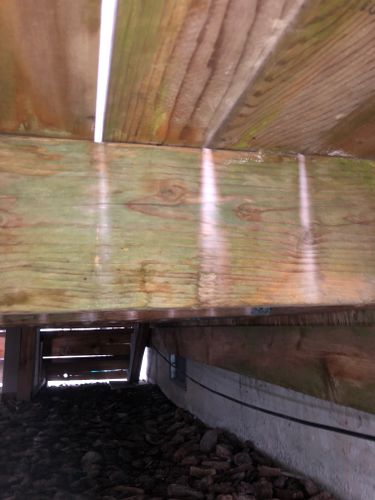  | 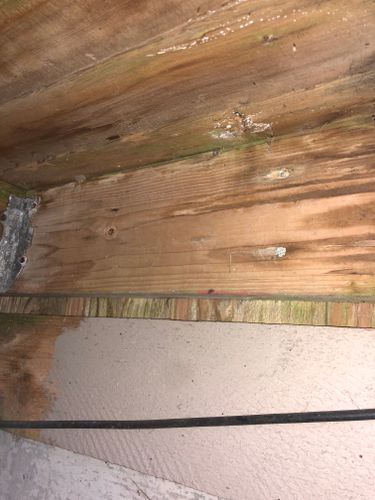  |
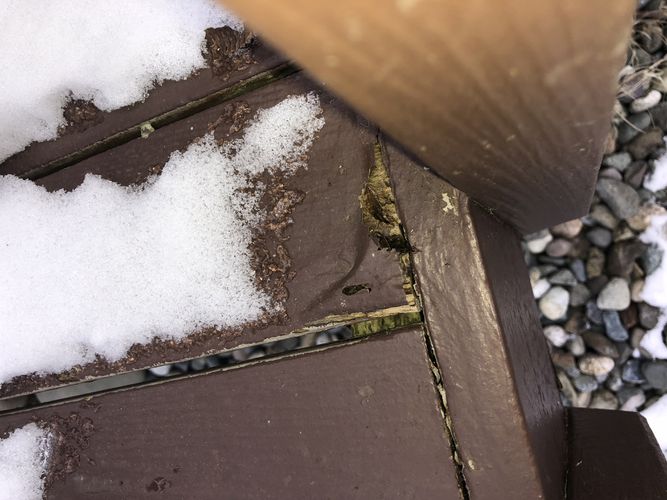  | |
Chimneys
Present
Chimney Material Metal below siding
Chimney Flue Liners Not visible
(EG-6) Repair: The metal chimney cap does not appear to be sloped to drain and is pooling water. This can facilitate corrosion in the cap and leakage in the chimney. Have this cap further evaluated and repaired or replaced by a licensed chimney sweep.
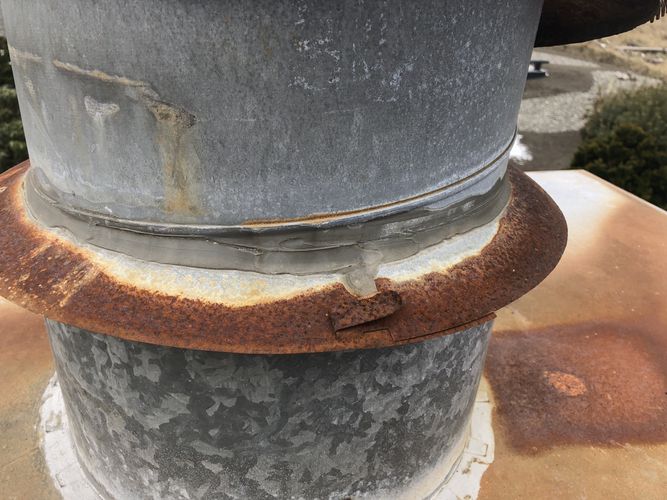  | 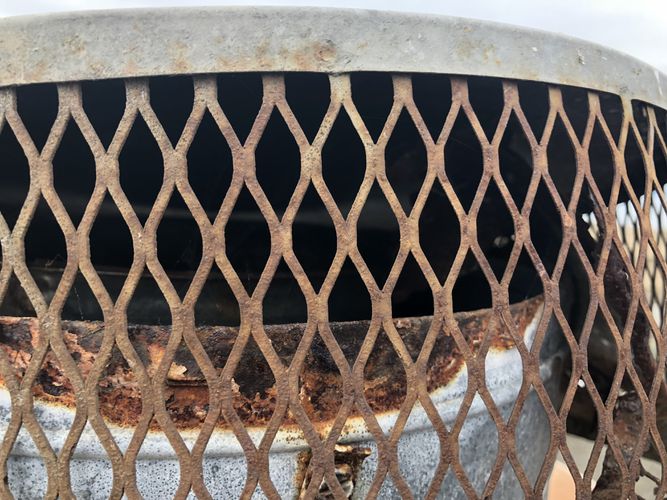  |
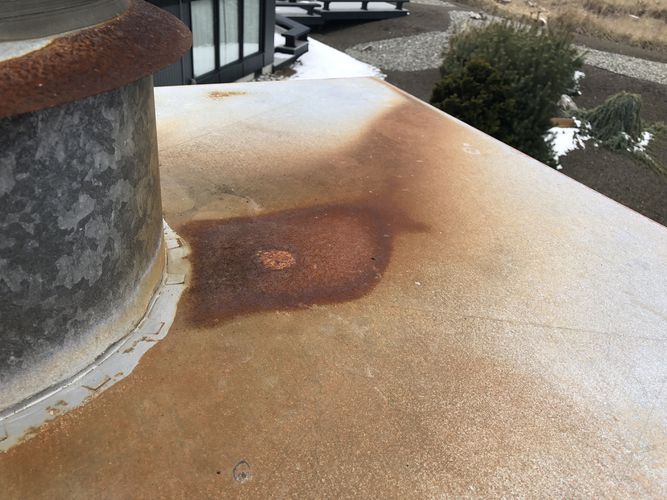  | |
Garage
Attached
Automatic Garage Opener Present
Garage Door Type Metal
(EG-7) Improve: An older model garage door opener was noted on the right side door with no laser eyes in use as a safety feature. These are less safe than modern openers which will reverse when the laser beam is broken. This safety feature is especially important for children and pets. Updating the garage door opener is recommended for improved safety.
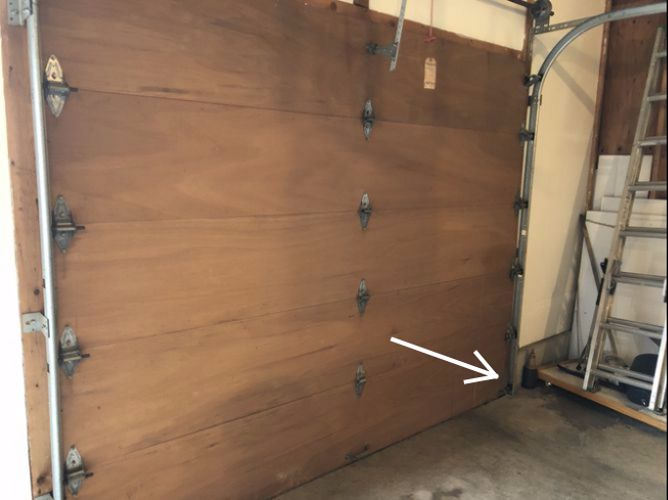  |
Grounds
Drainage and Lot Location
Clearance to Grade Standard
Downspout Discharge Below grade
Lot Description Flat, Low bank coastal
Driveways/Walkways/Flatwork
Driveway Concrete
Walkways Concrete
Grounds, Trees and Vegetation
Trees/Vegetation too near building Yes
(G-1) Repair: All trees, branches and vegetation should be pruned at least six feet away from the house to eliminate conducive pest conditions and rodent entry points. The vines and plants can trap moisture against siding.
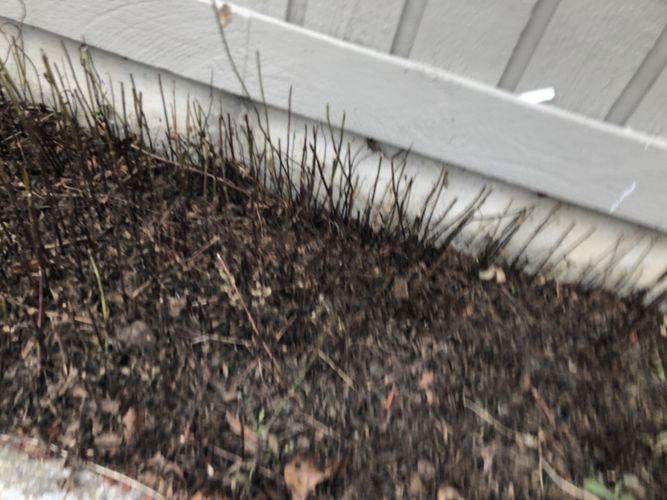  | 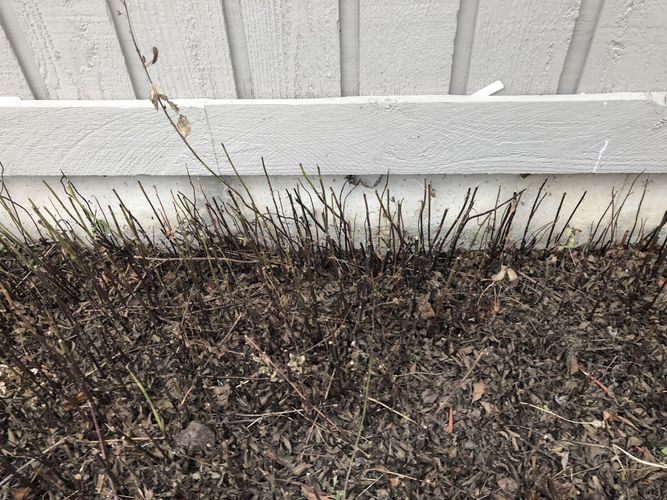  |
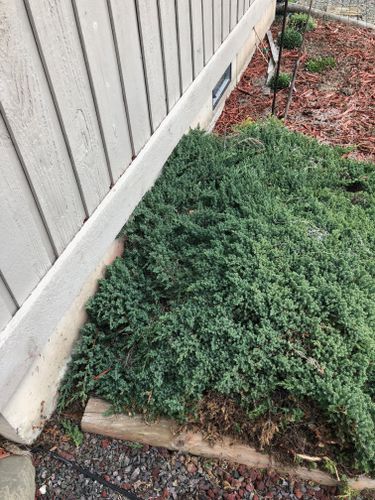  | |
Retaining Walls
None noted
Exterior Stairs
Non-standard
Fences
None noted
Pools and Spas
Pool or Spa Type
Above Ground
Heater
Electric
Filters
Cartridge
Pumps, Blowers and Valves
Circulation pumps
(PS-1) Due Diligence: Corrosion was noted on spa pump - have the system checked out by a specialist before operation.
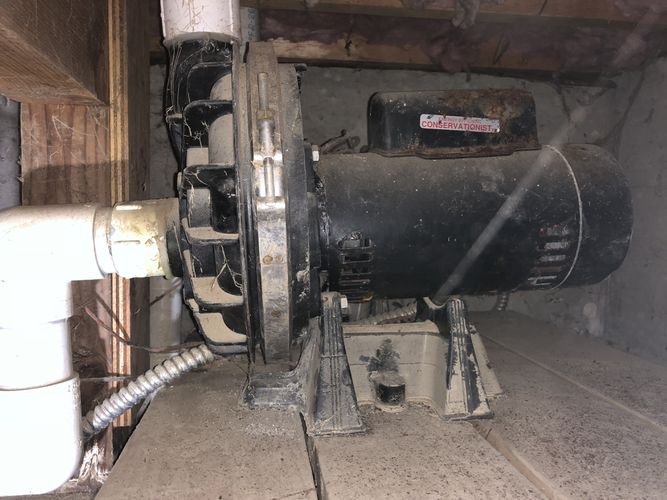  | 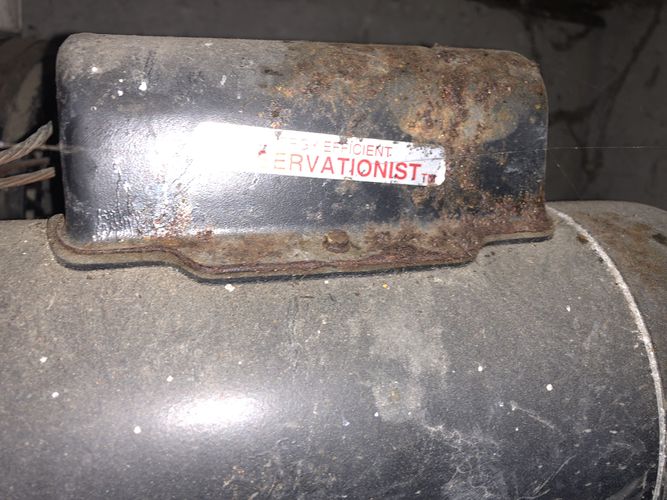  |
Pool / Spa Electrical
Standard
Fencing, Decking and Coping
Standard
Water Quality
Not in service
Receipt -- Single Family Inspection
| Residential Home and Structural Pest Inspection | $495.00 |
| $495.00 |
Rainshadow Home Inspection
C/O James Lagergren
237 Taylor St 2nd Floor
Port Townsend, WA 98368
(360) 301-2035


